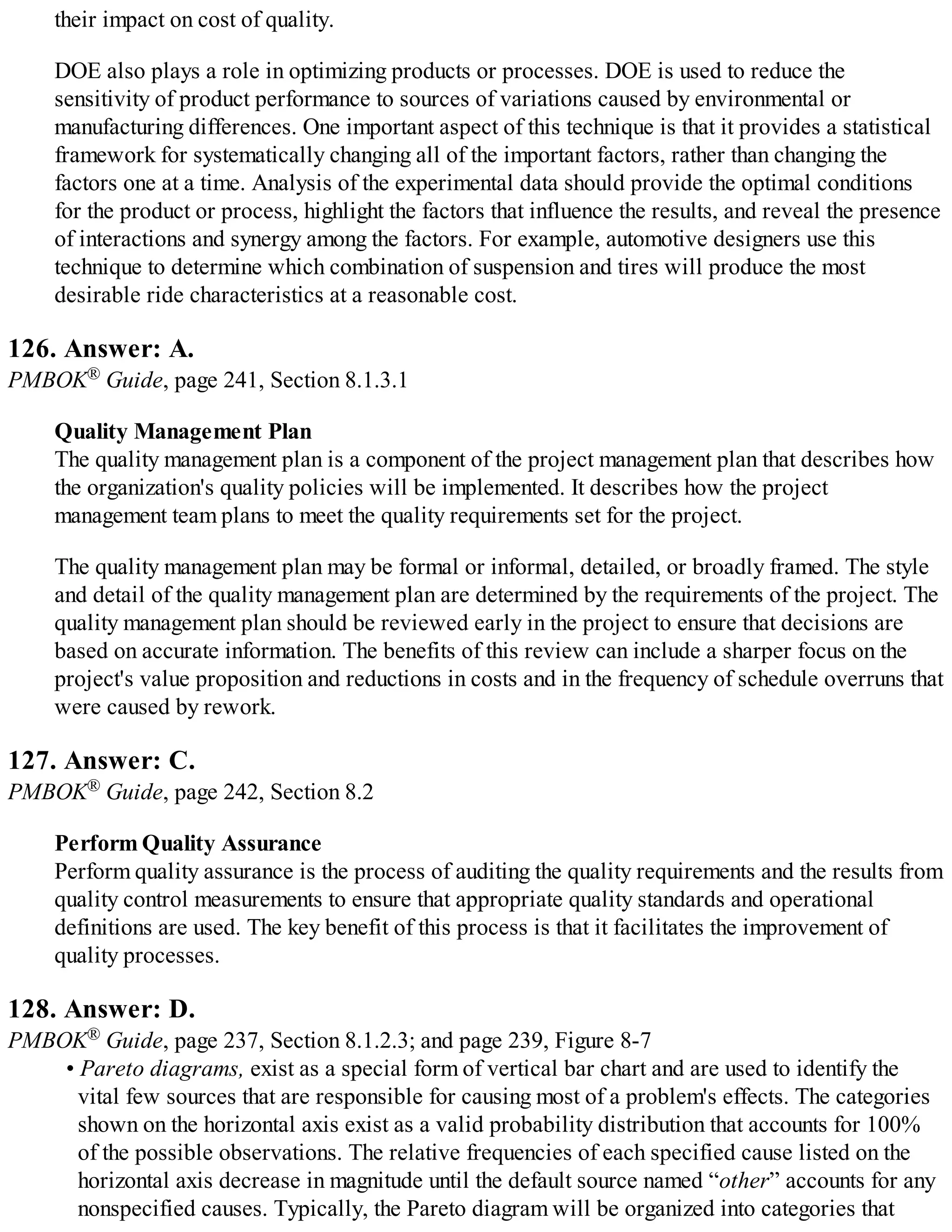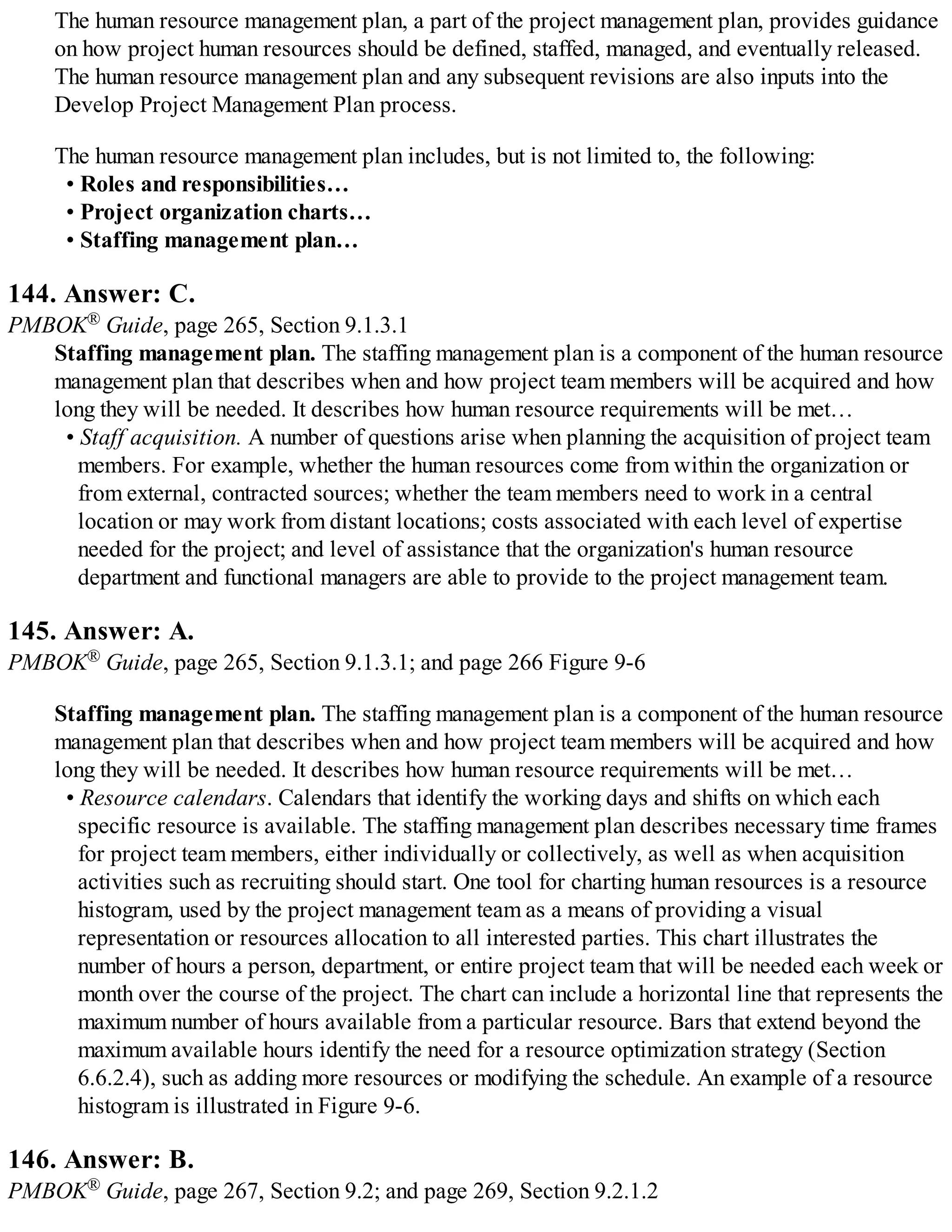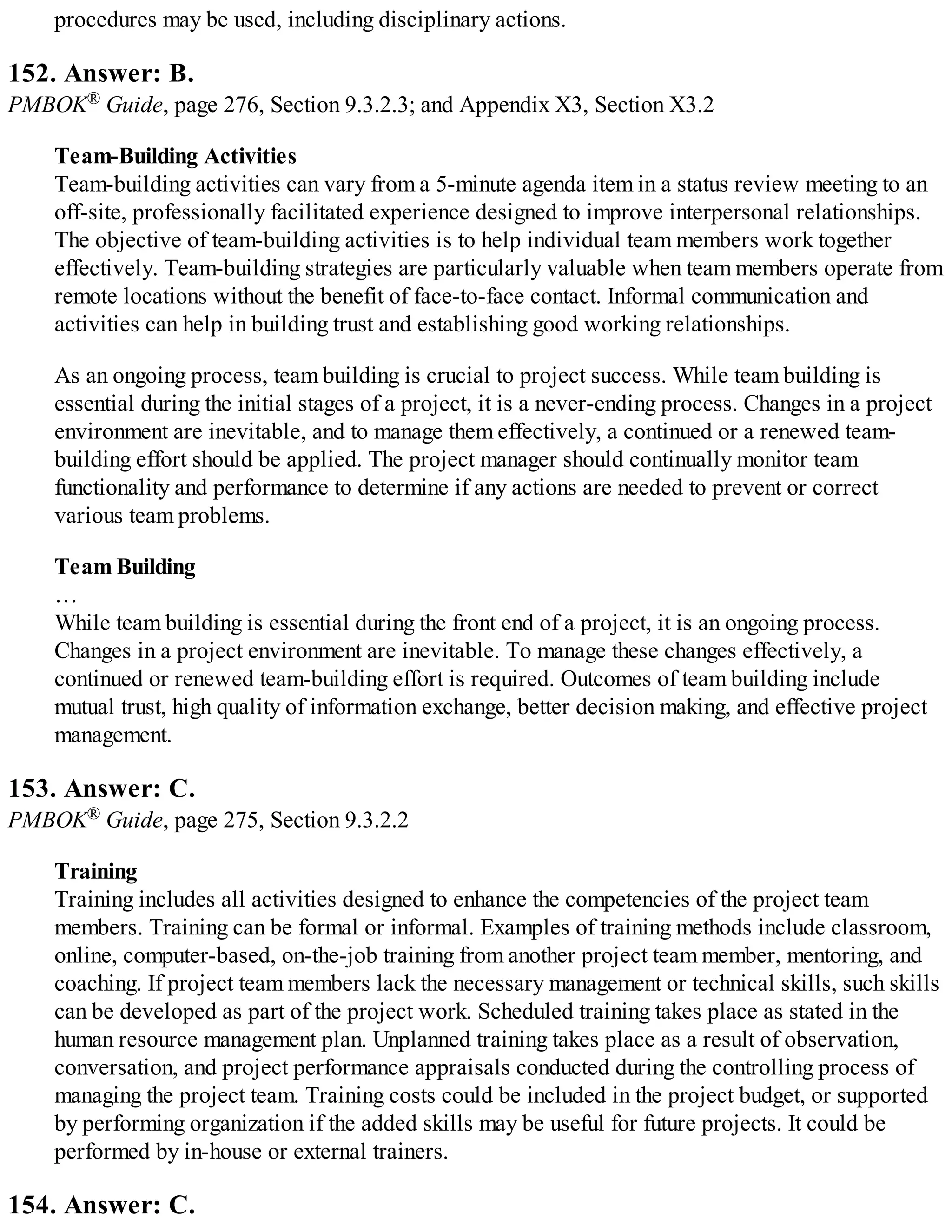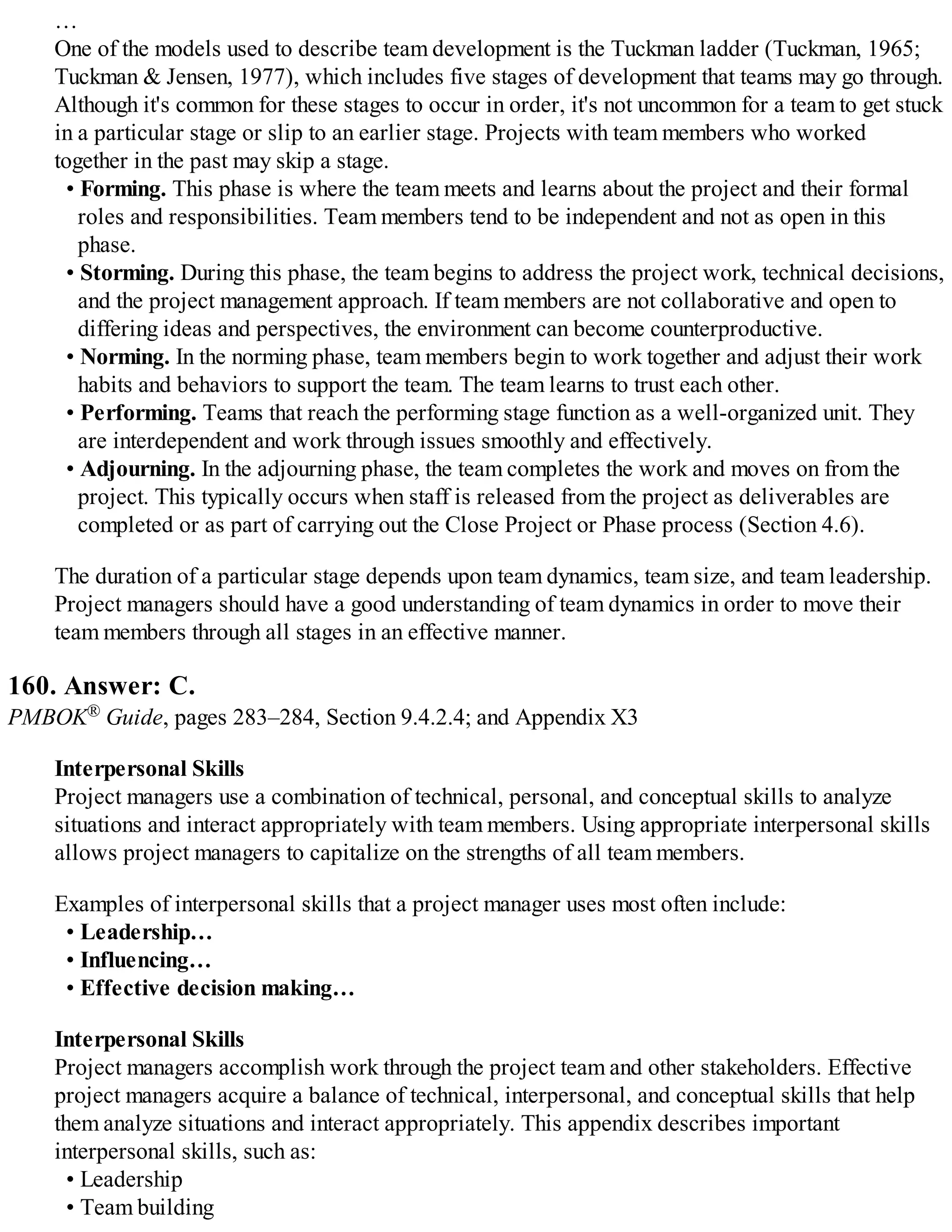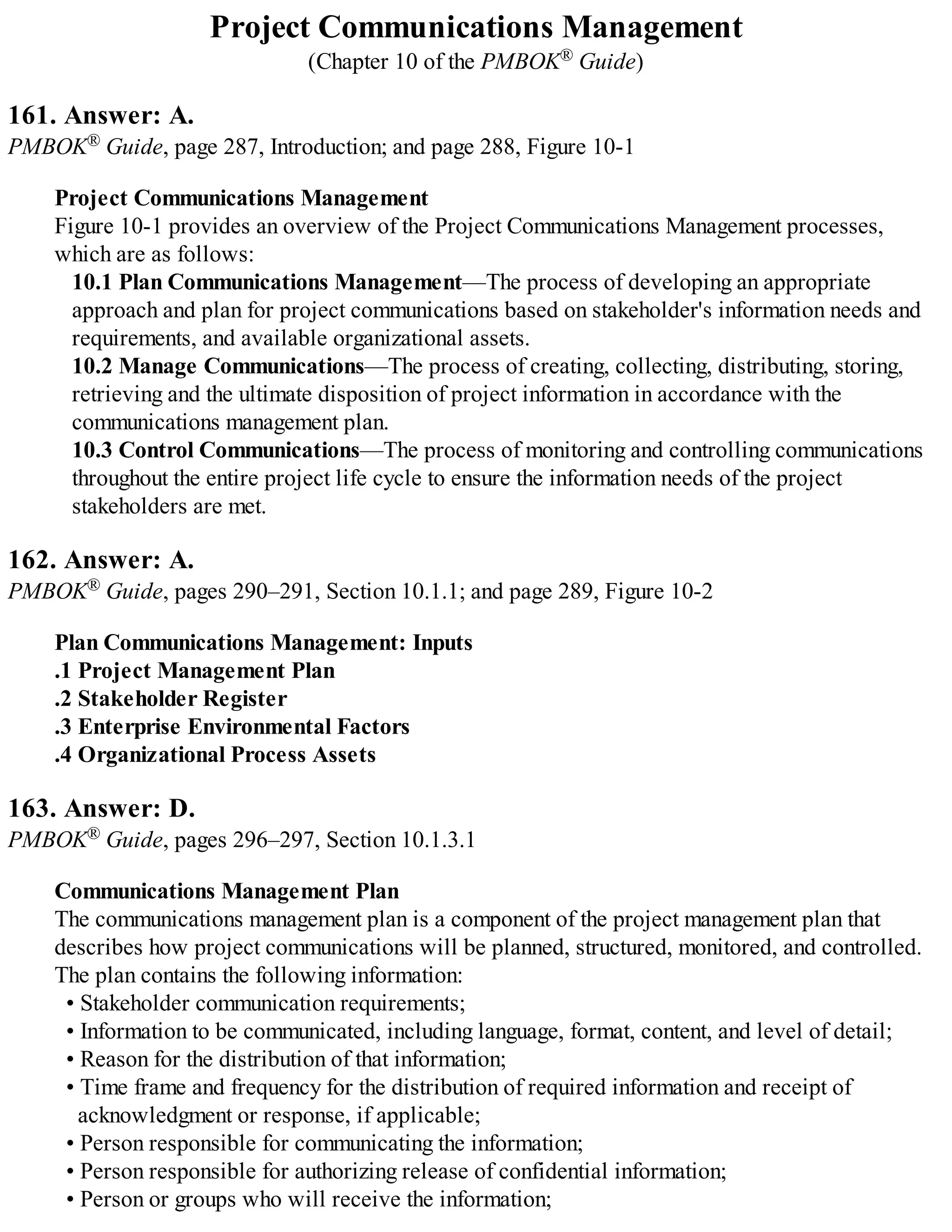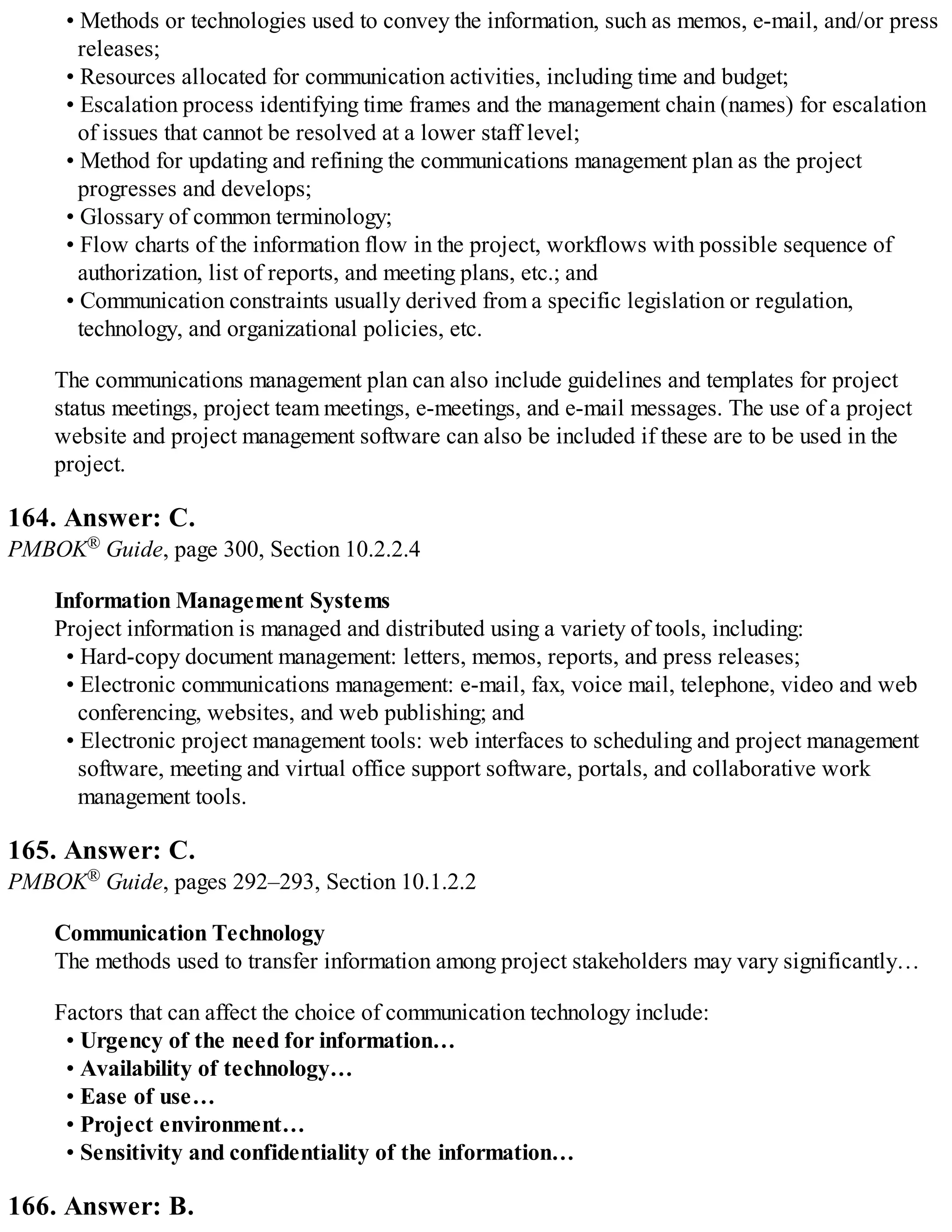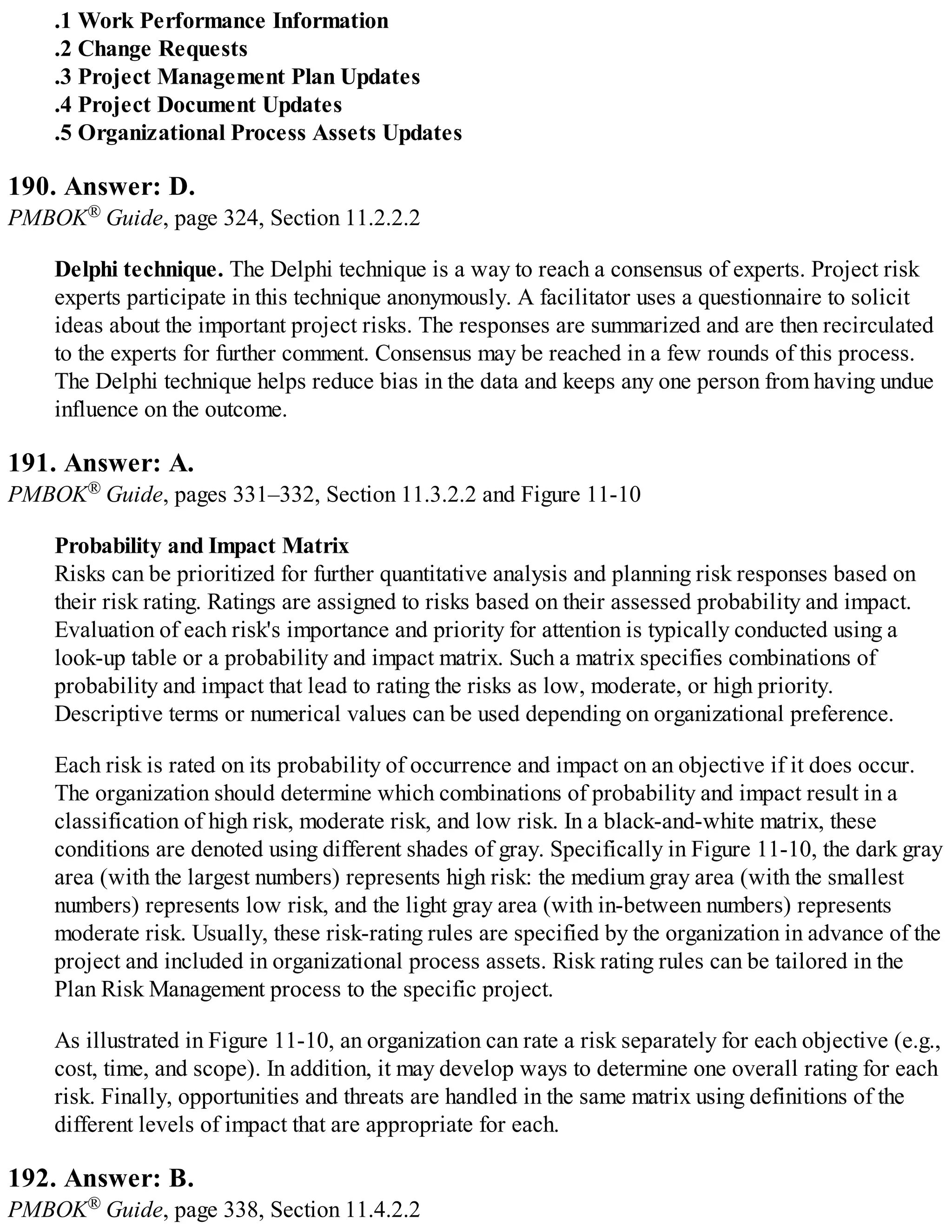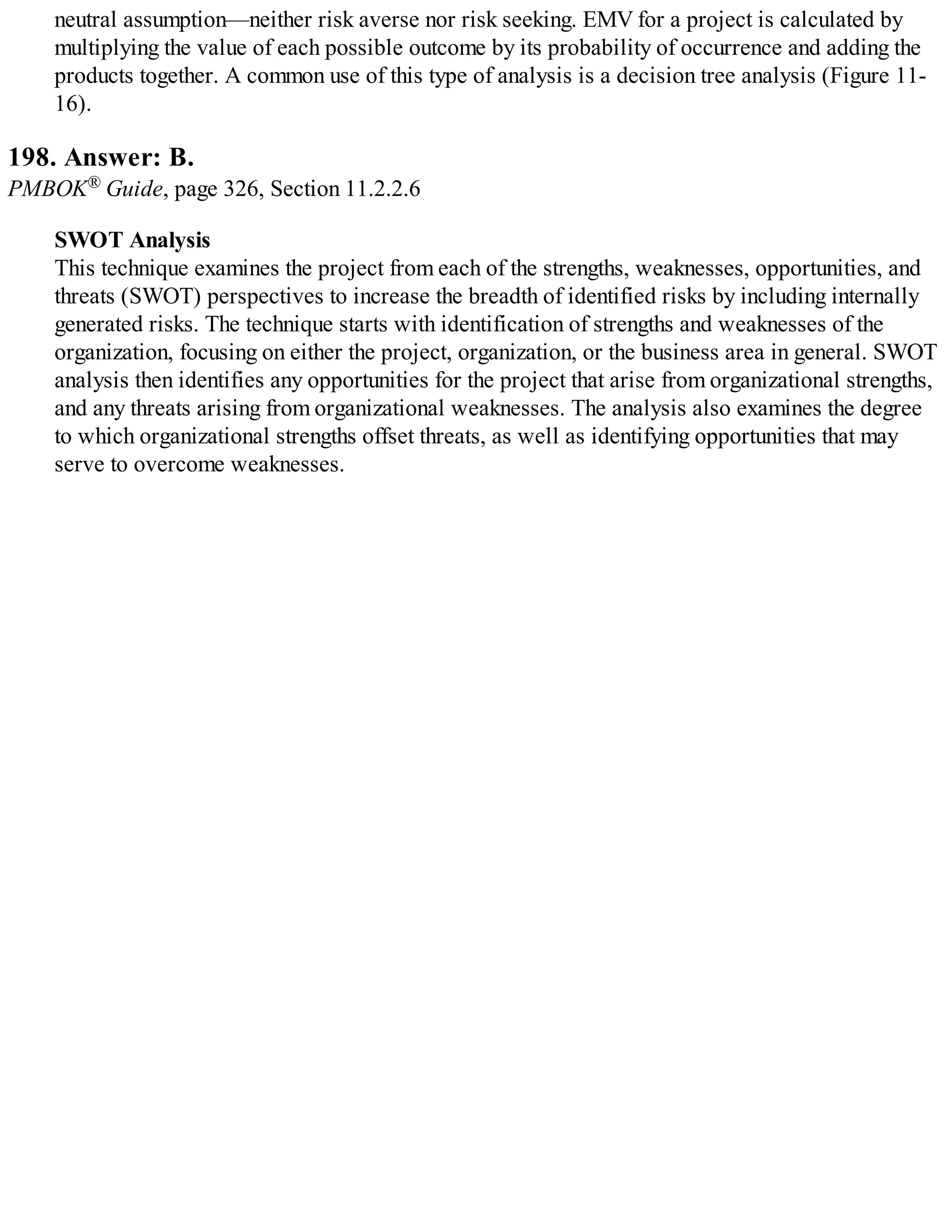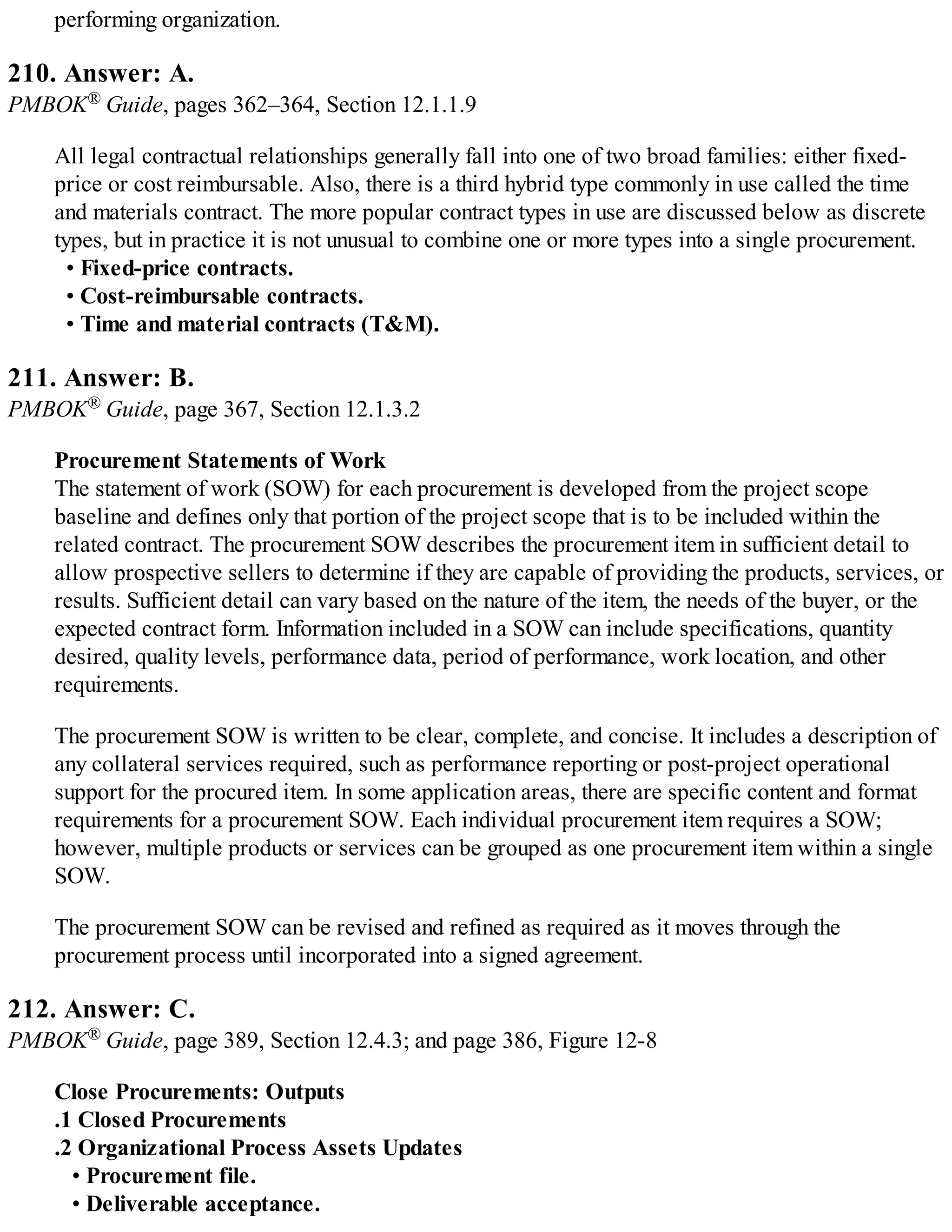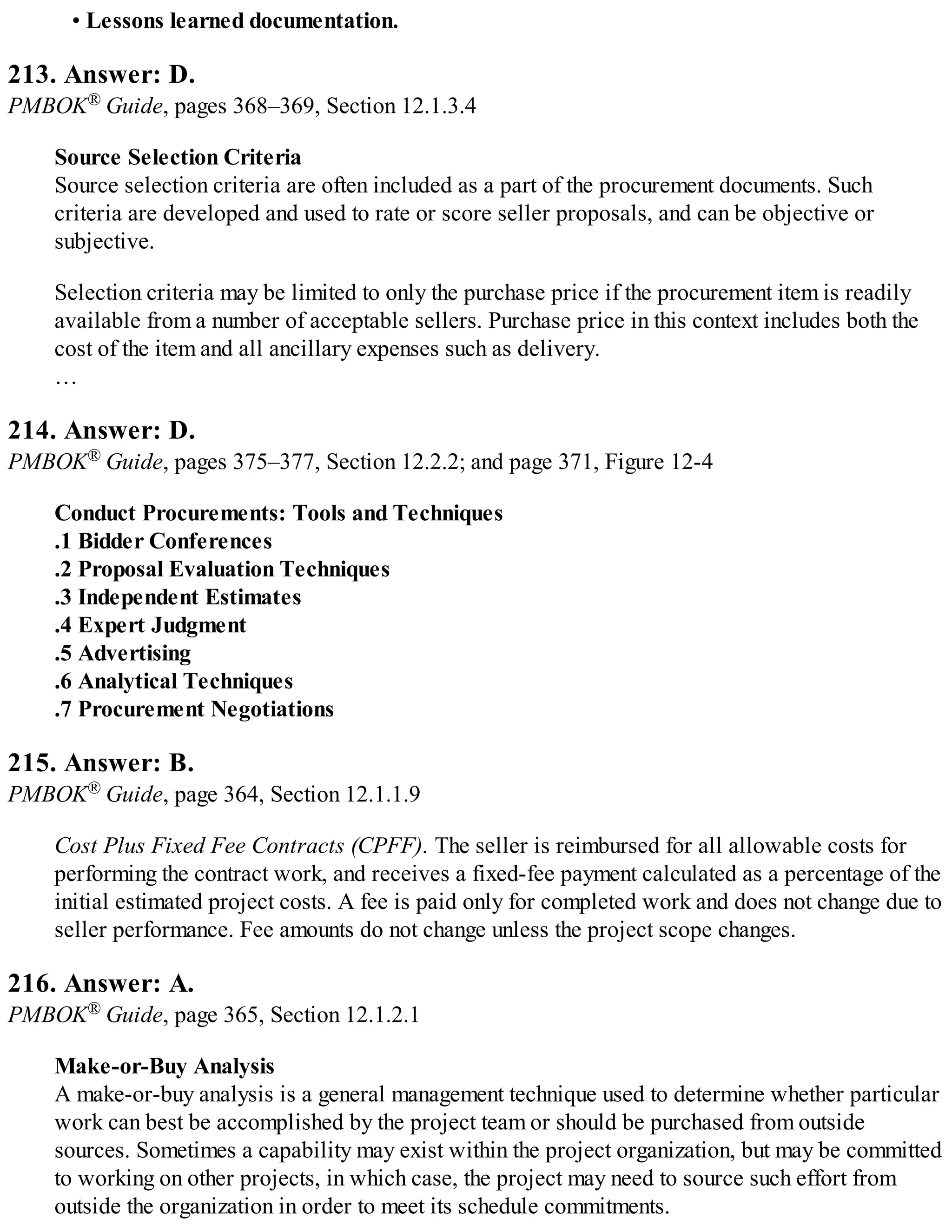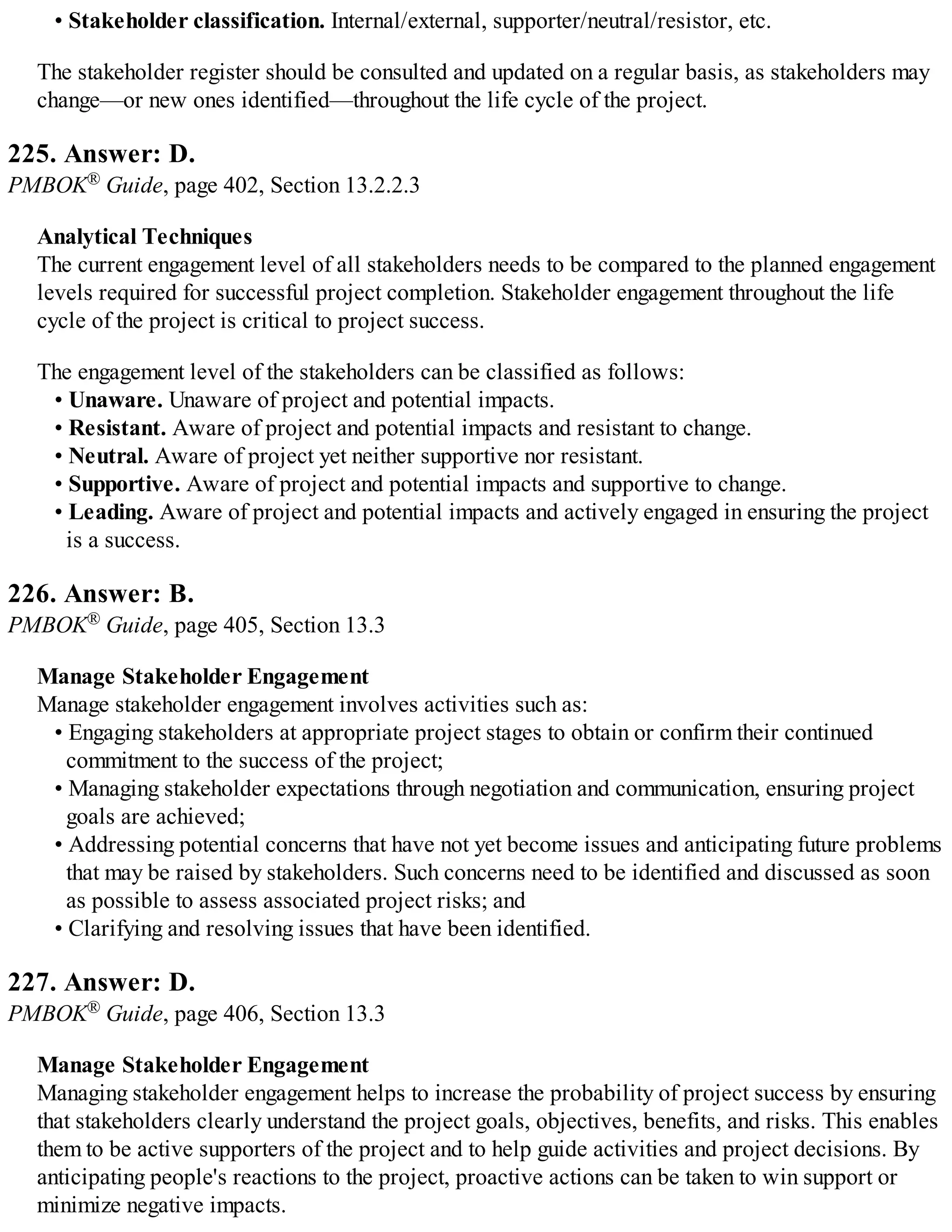This document provides an introduction to the Q & As for the PMBOK® Guide Fifth Edition book. It discusses the contributors to the book and previous editions. The introduction notes that the book facilitates developing a deeper understanding of generally accepted project management knowledge and practice through multiple choice questions and answers covering key PMBOK® Guide concepts. It aims to address the project management processes and knowledge areas from A Guide to the Project Management Body of Knowledge. The introduction thanks all the contributors who helped create the book and its predecessors.












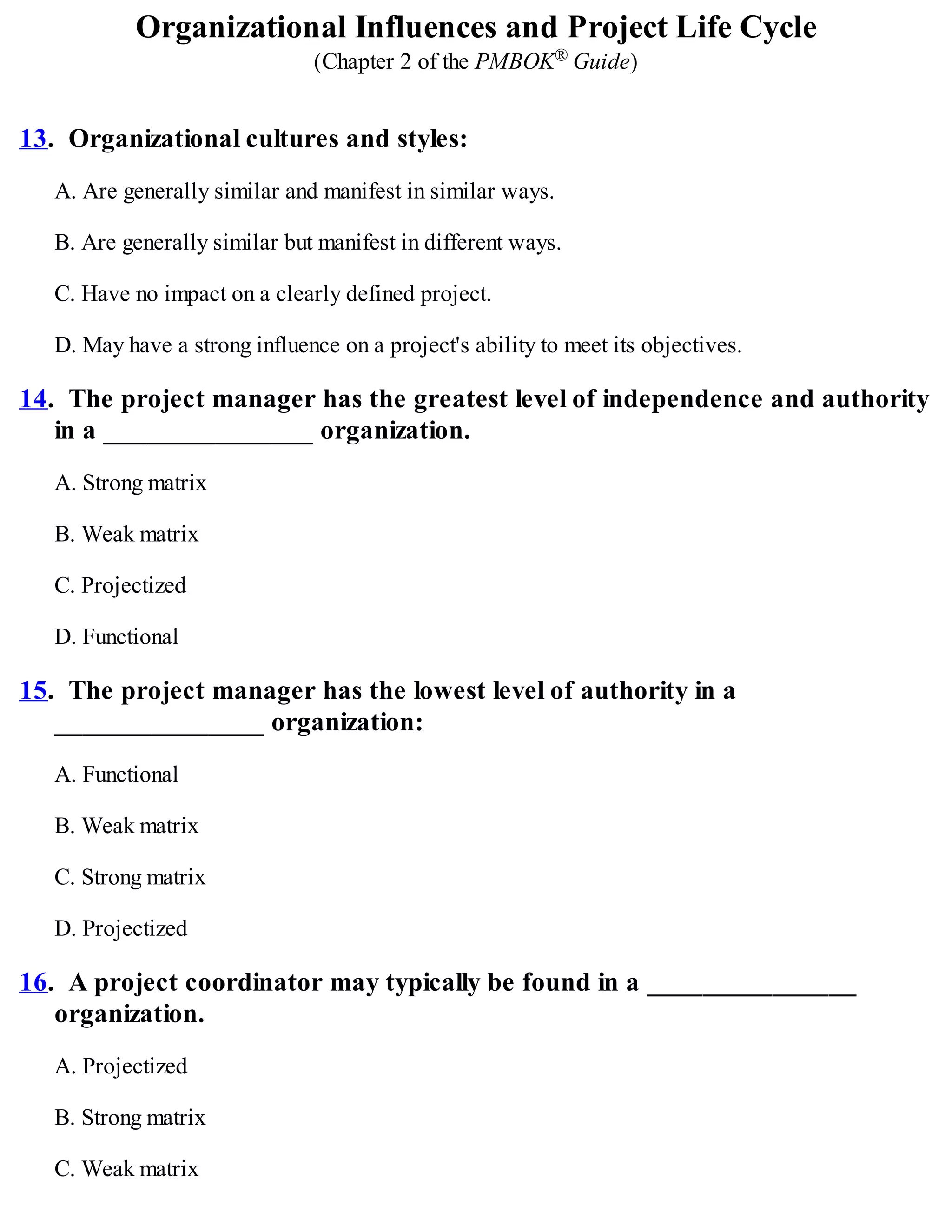




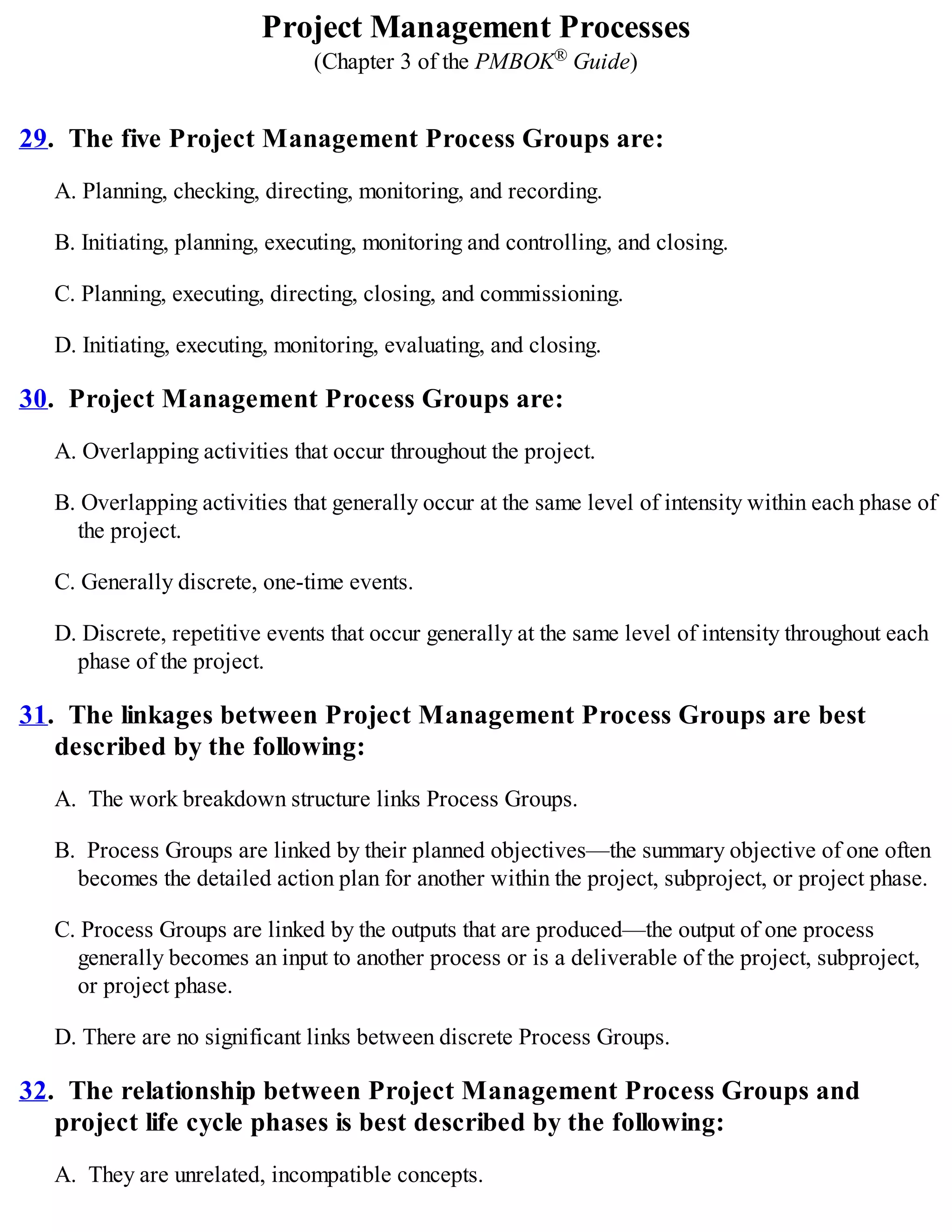




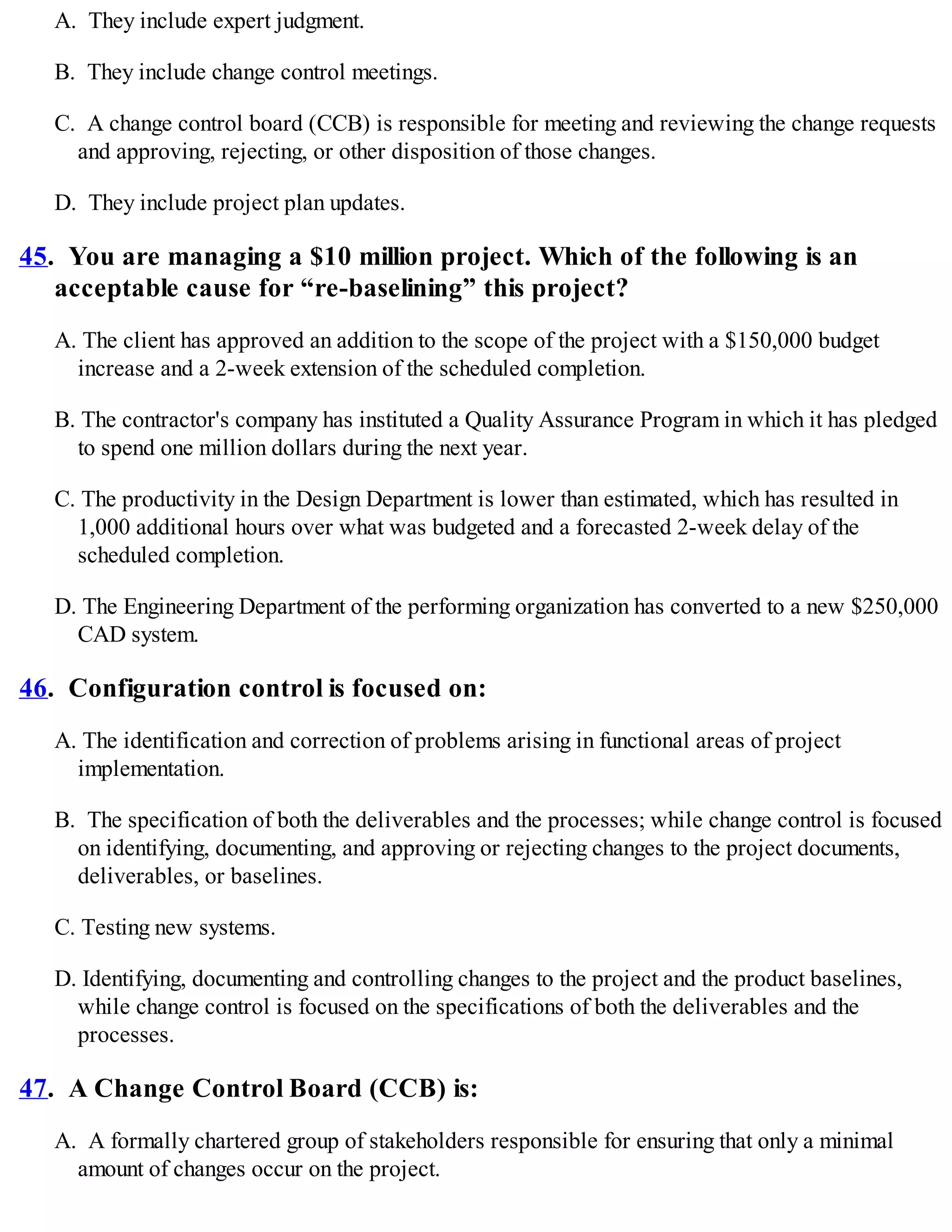
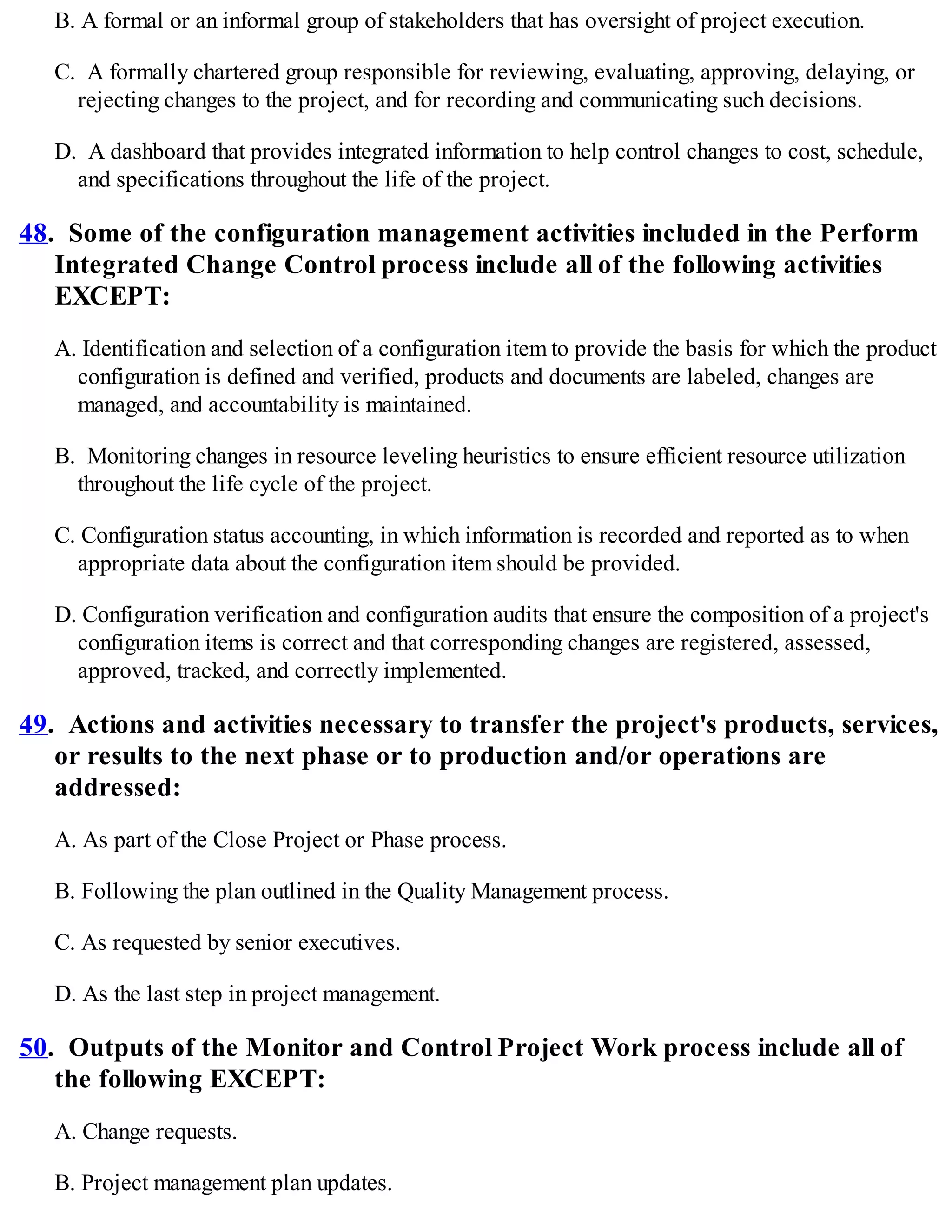




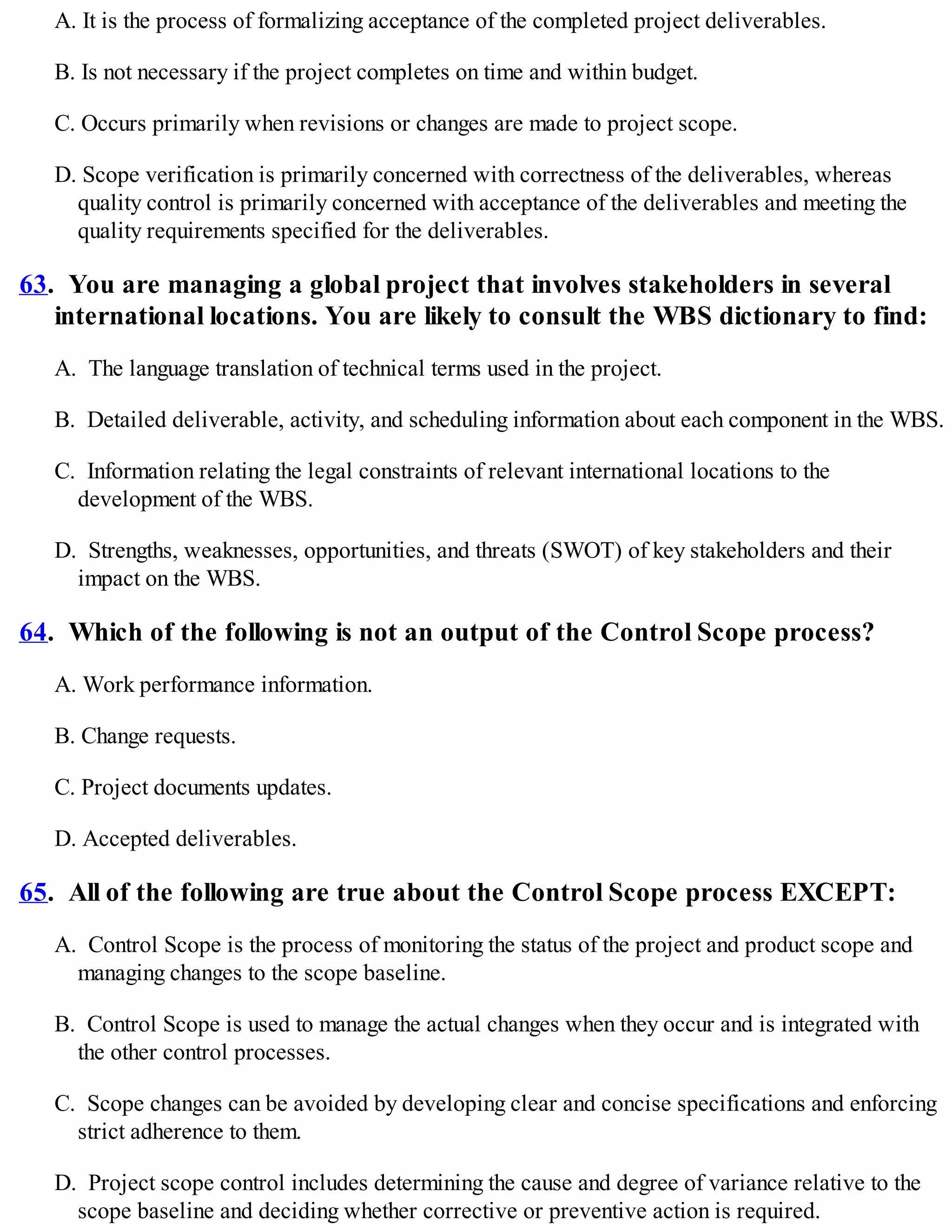
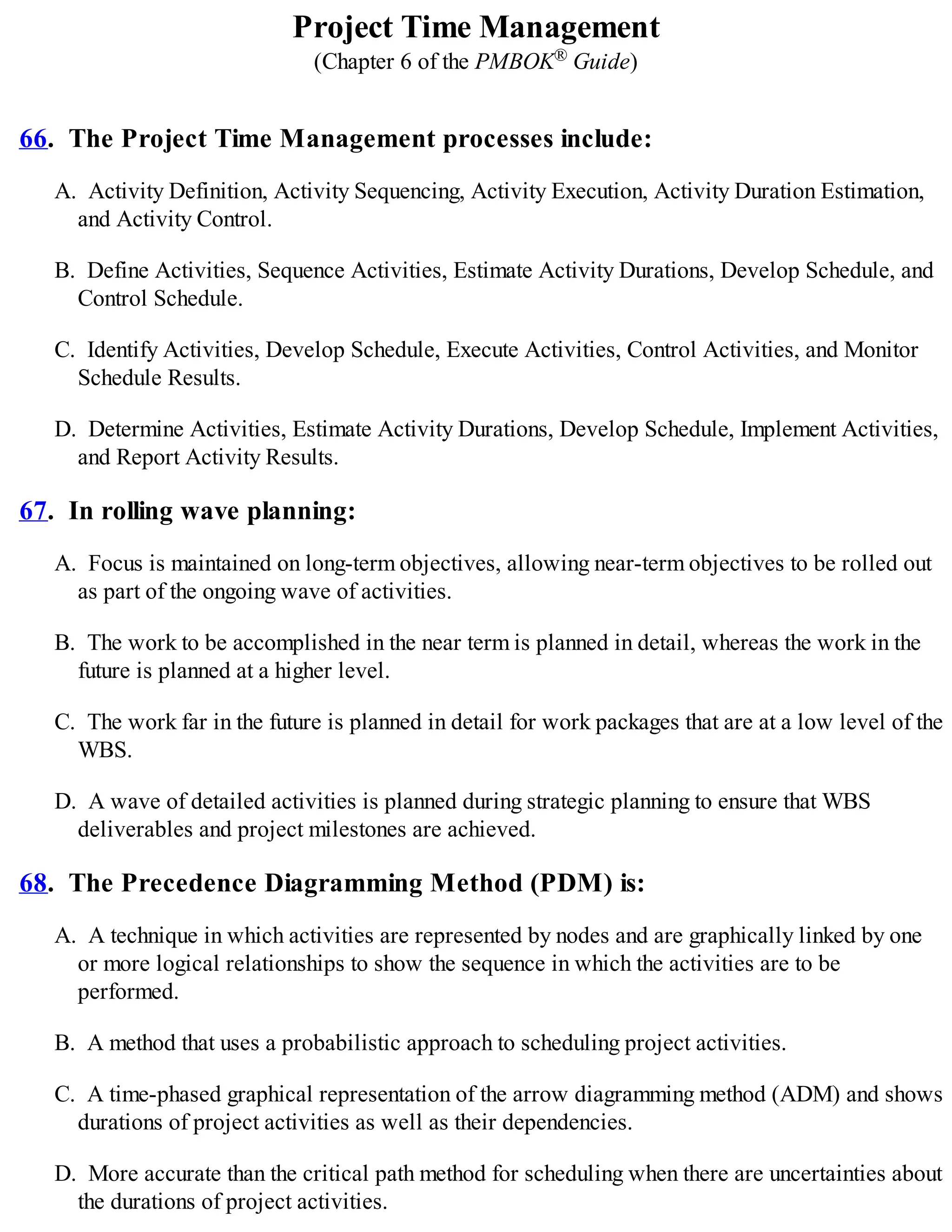


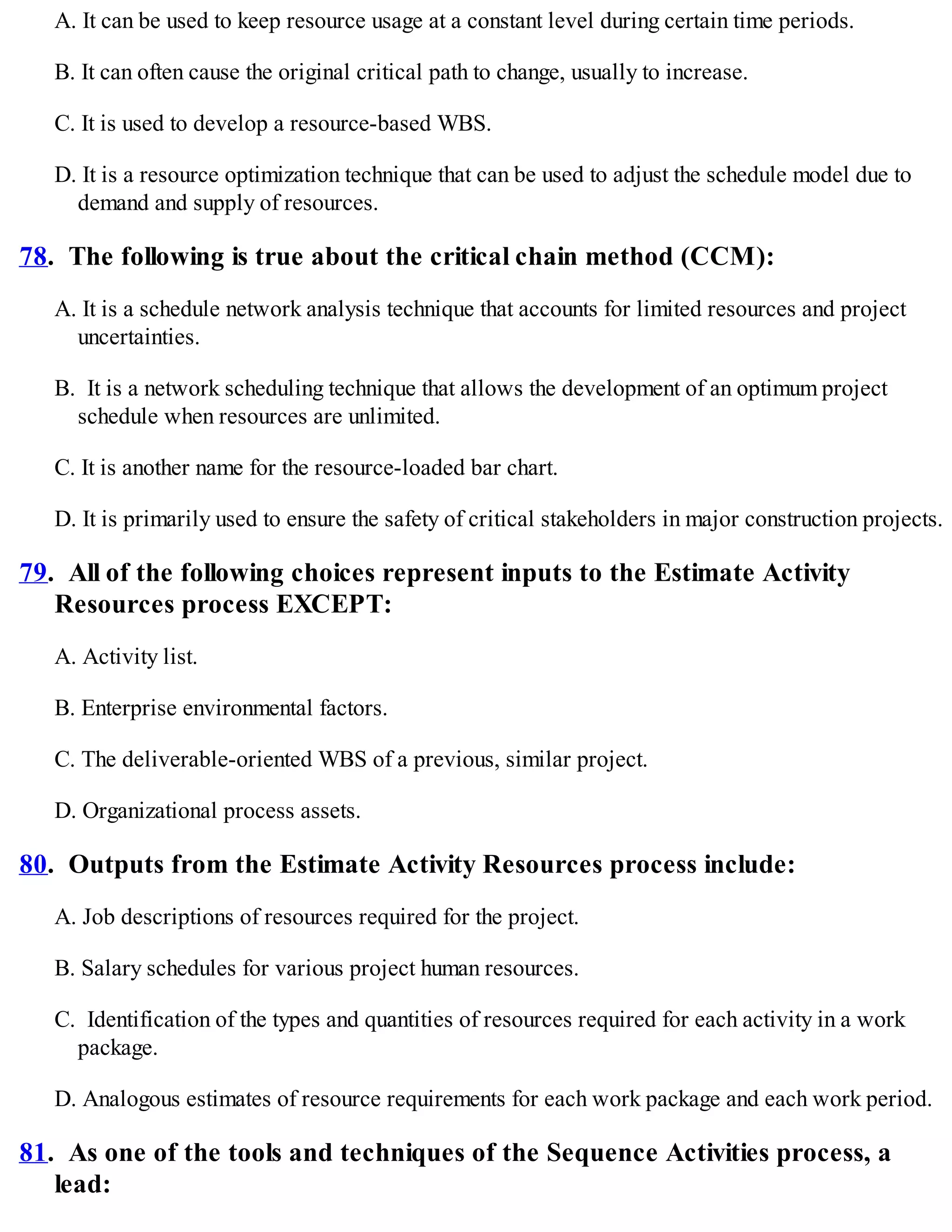






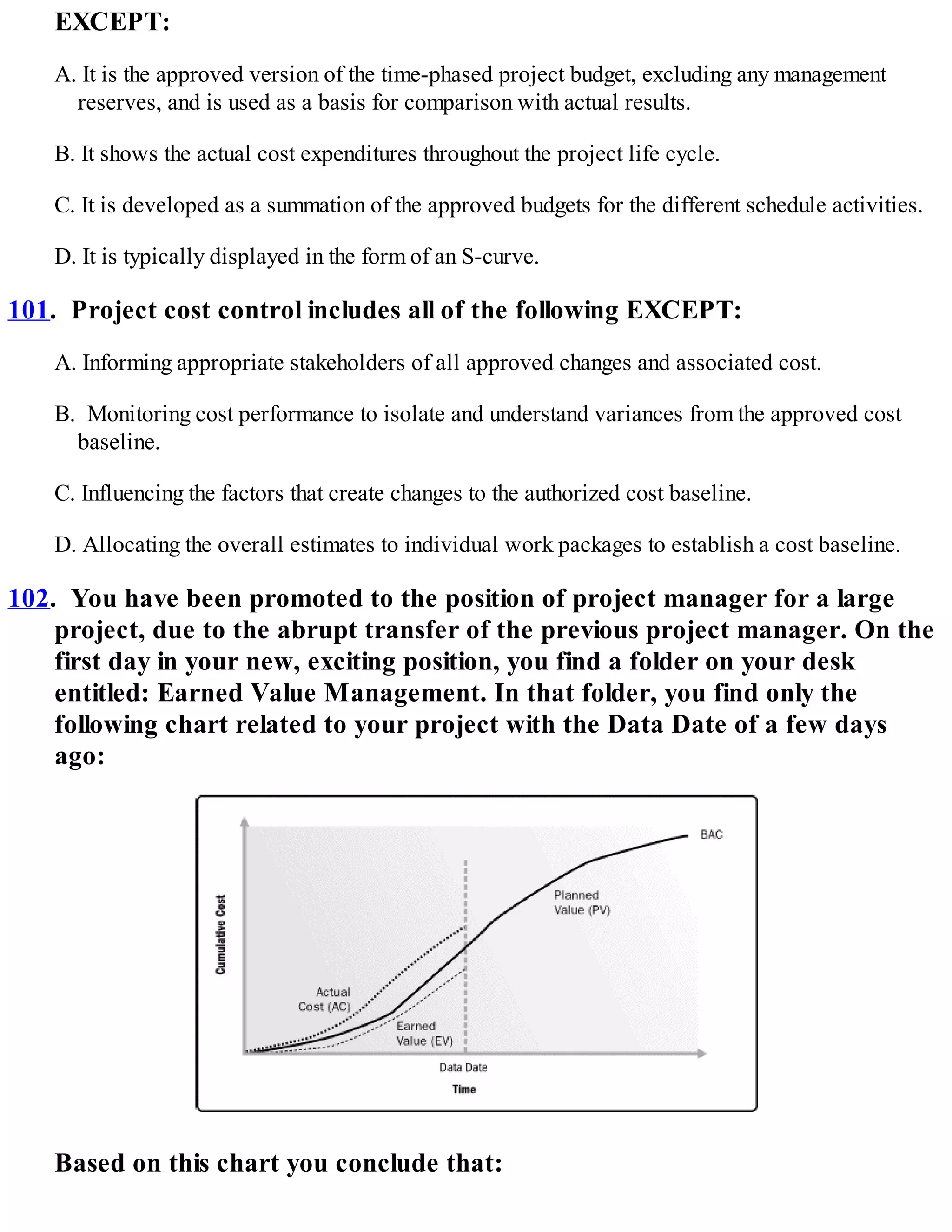
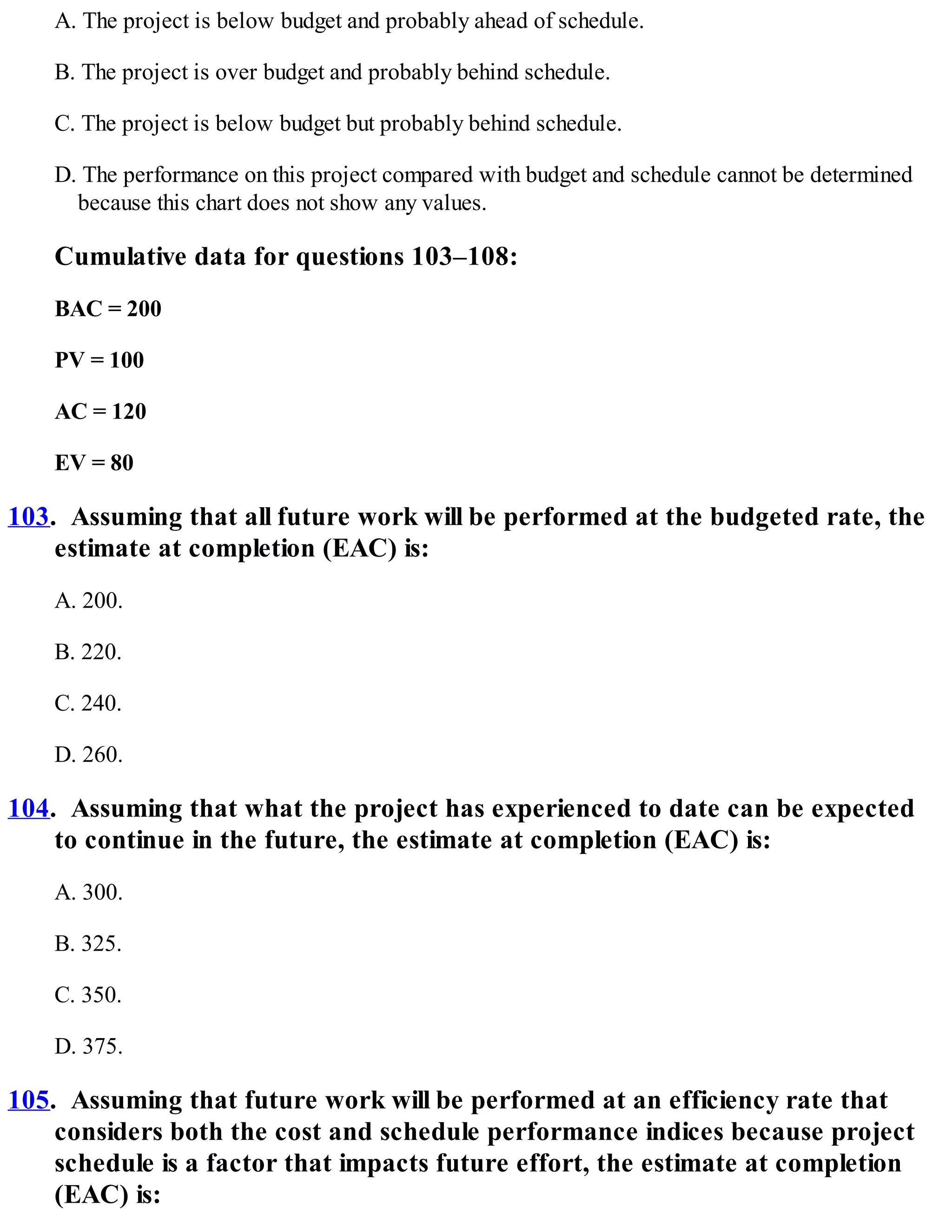
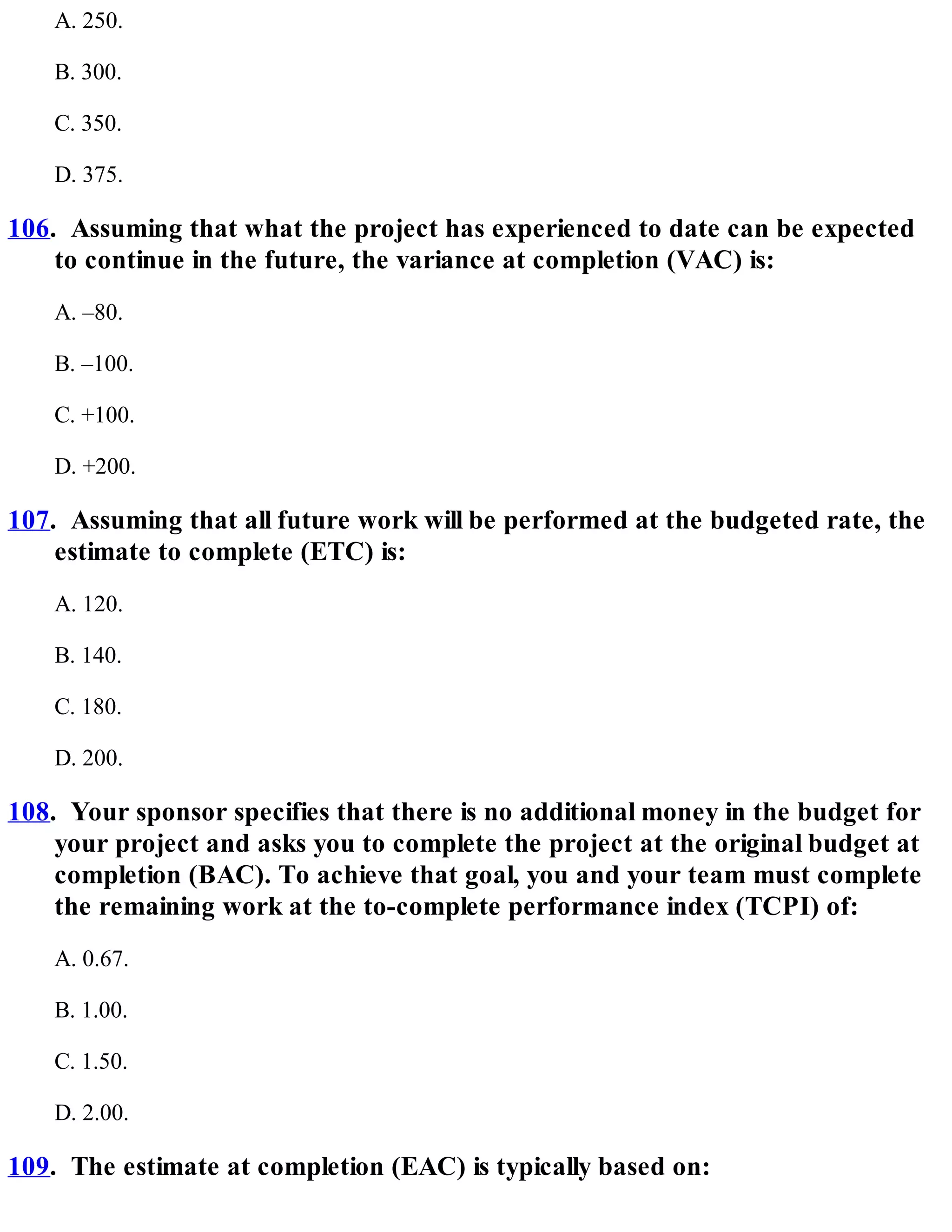

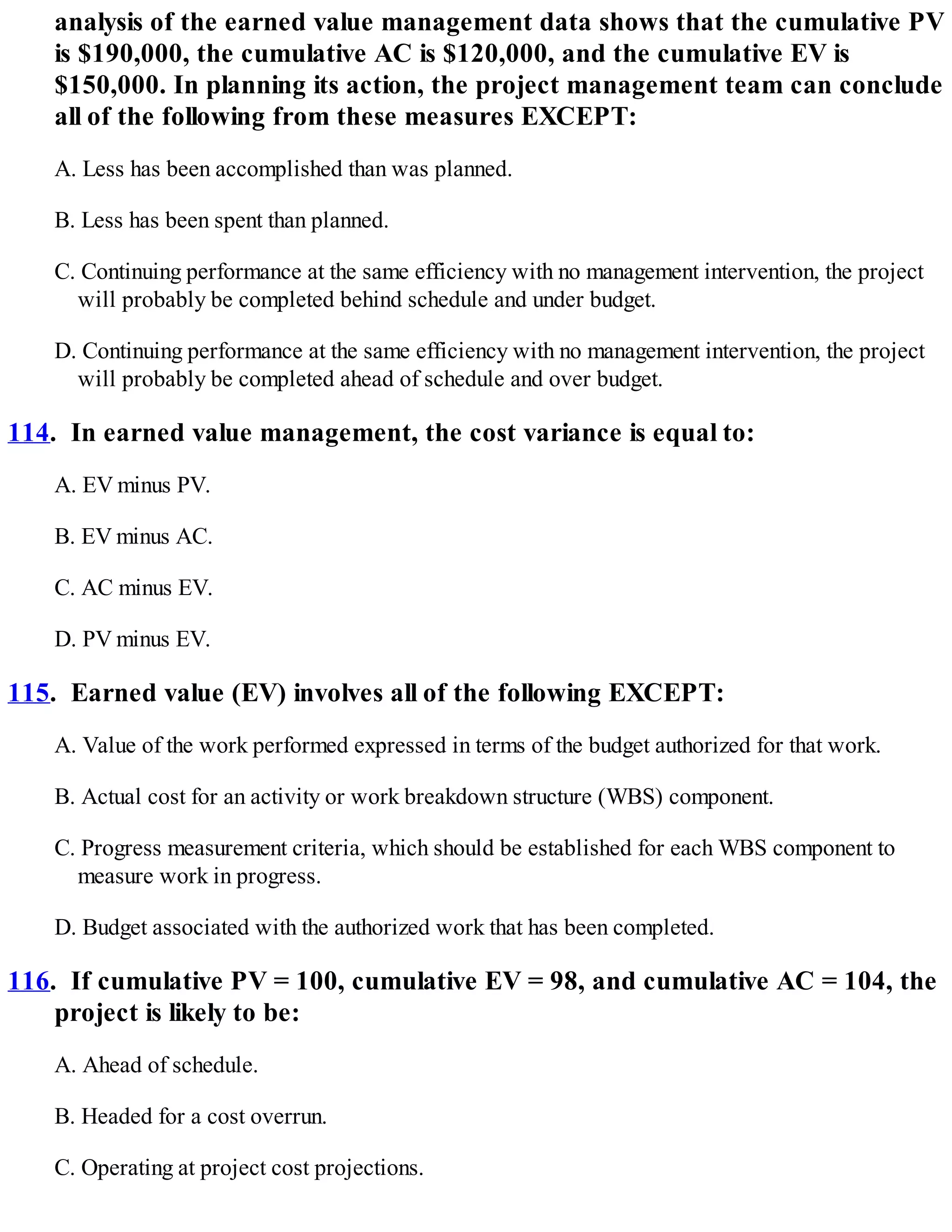














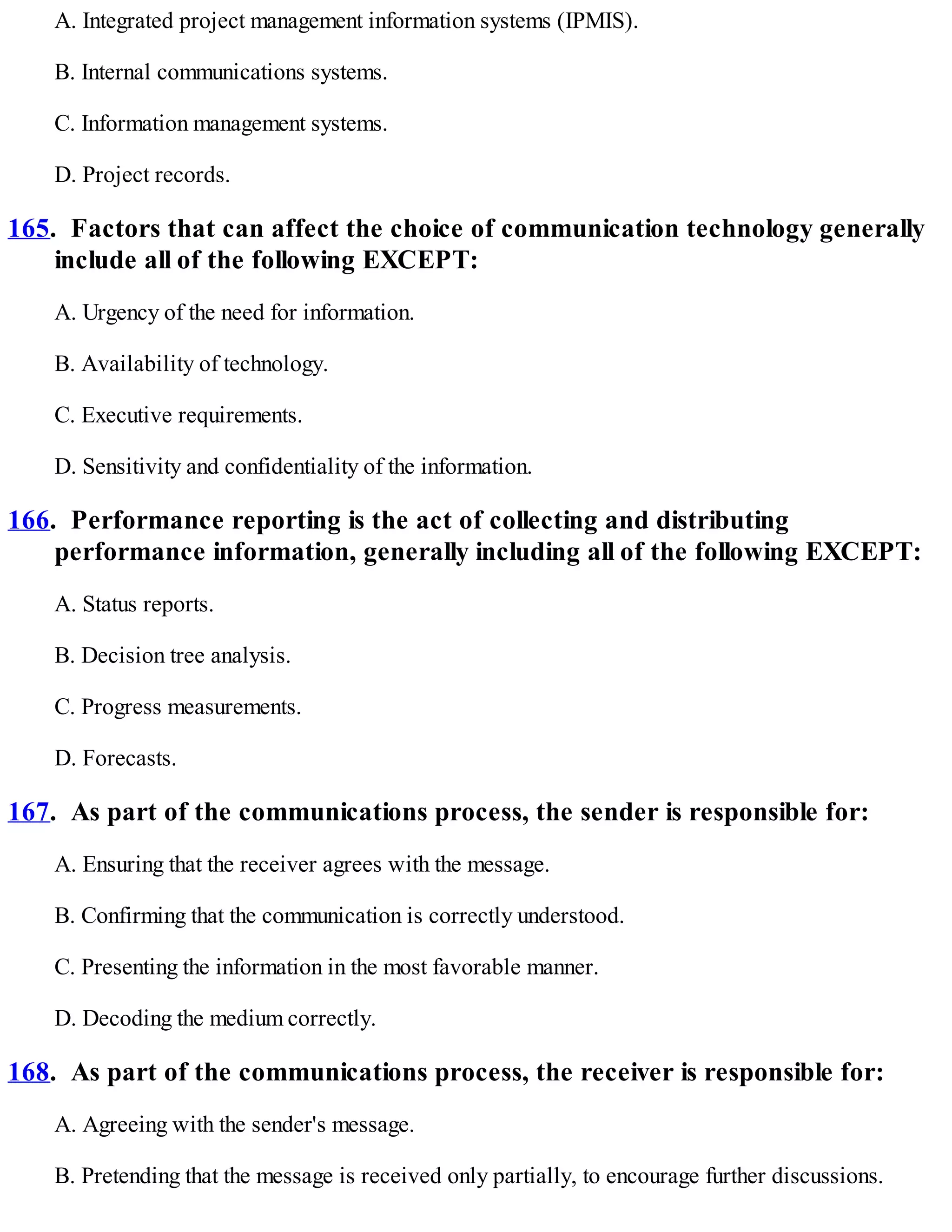




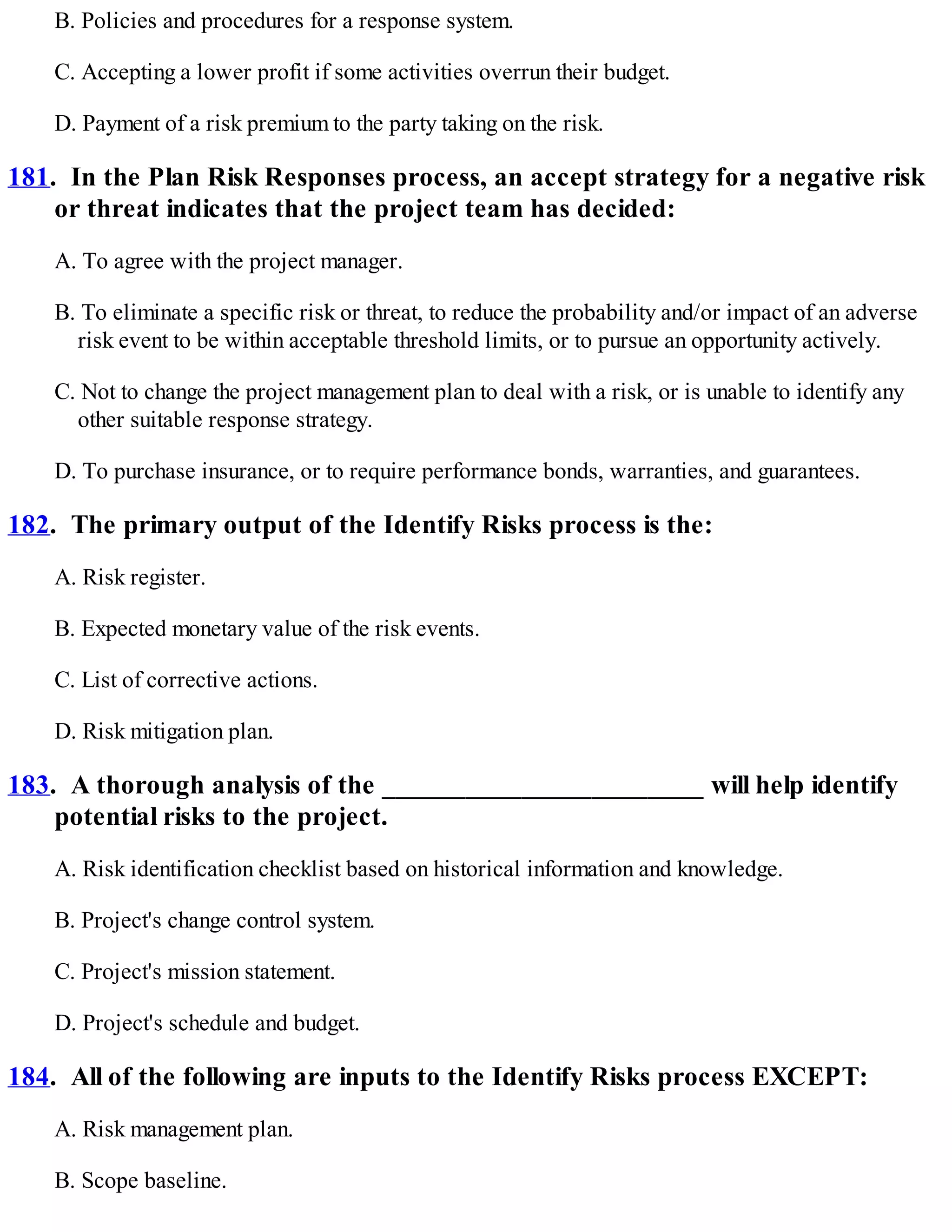

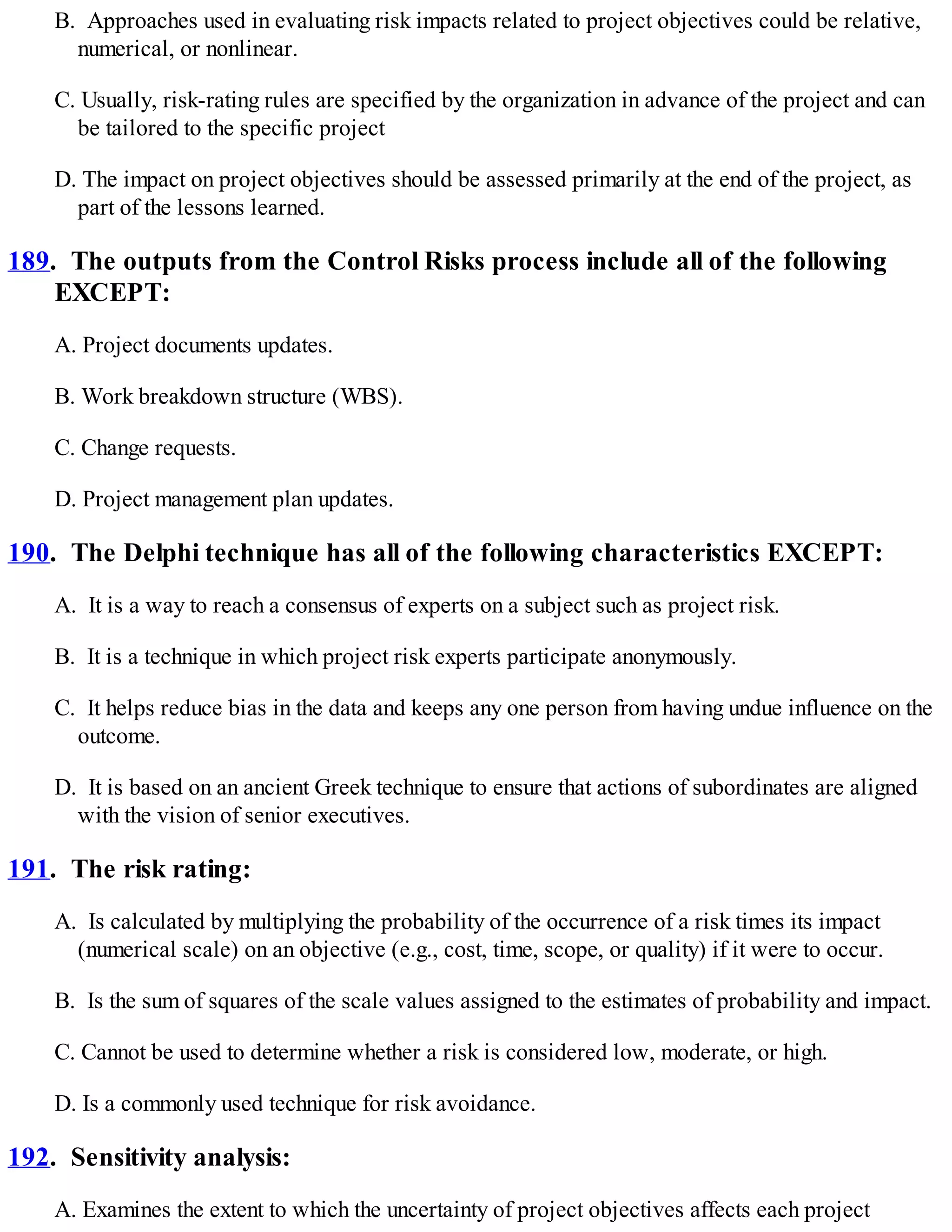




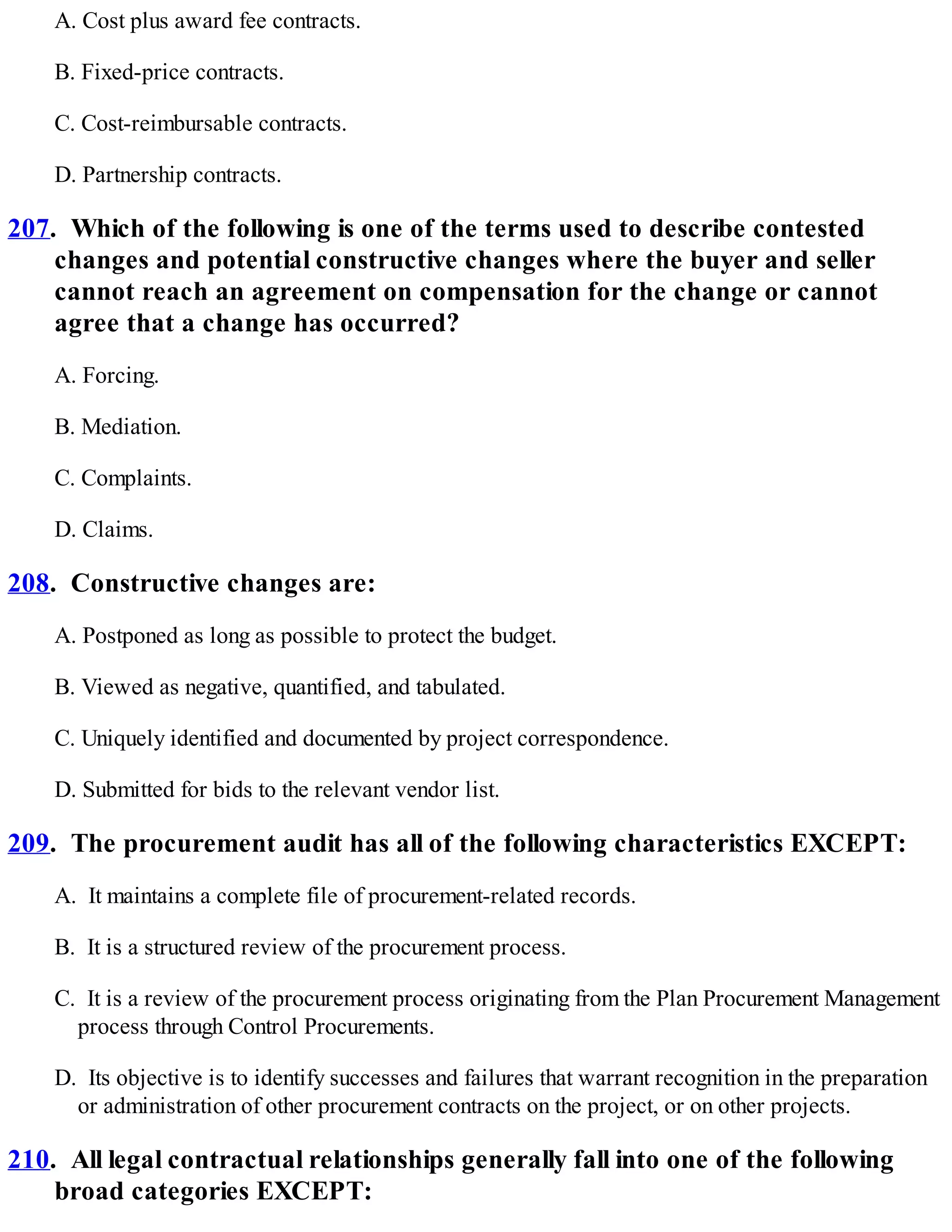
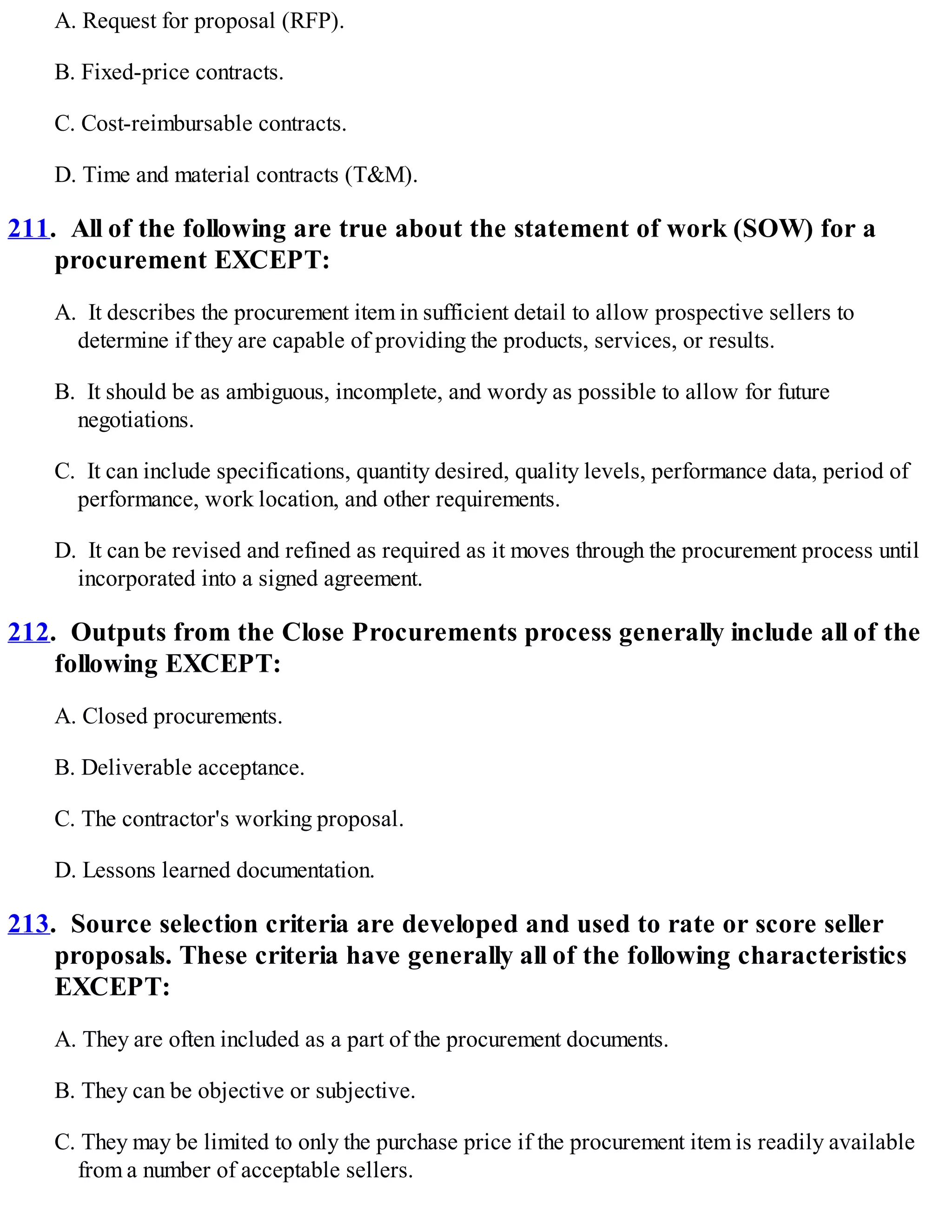







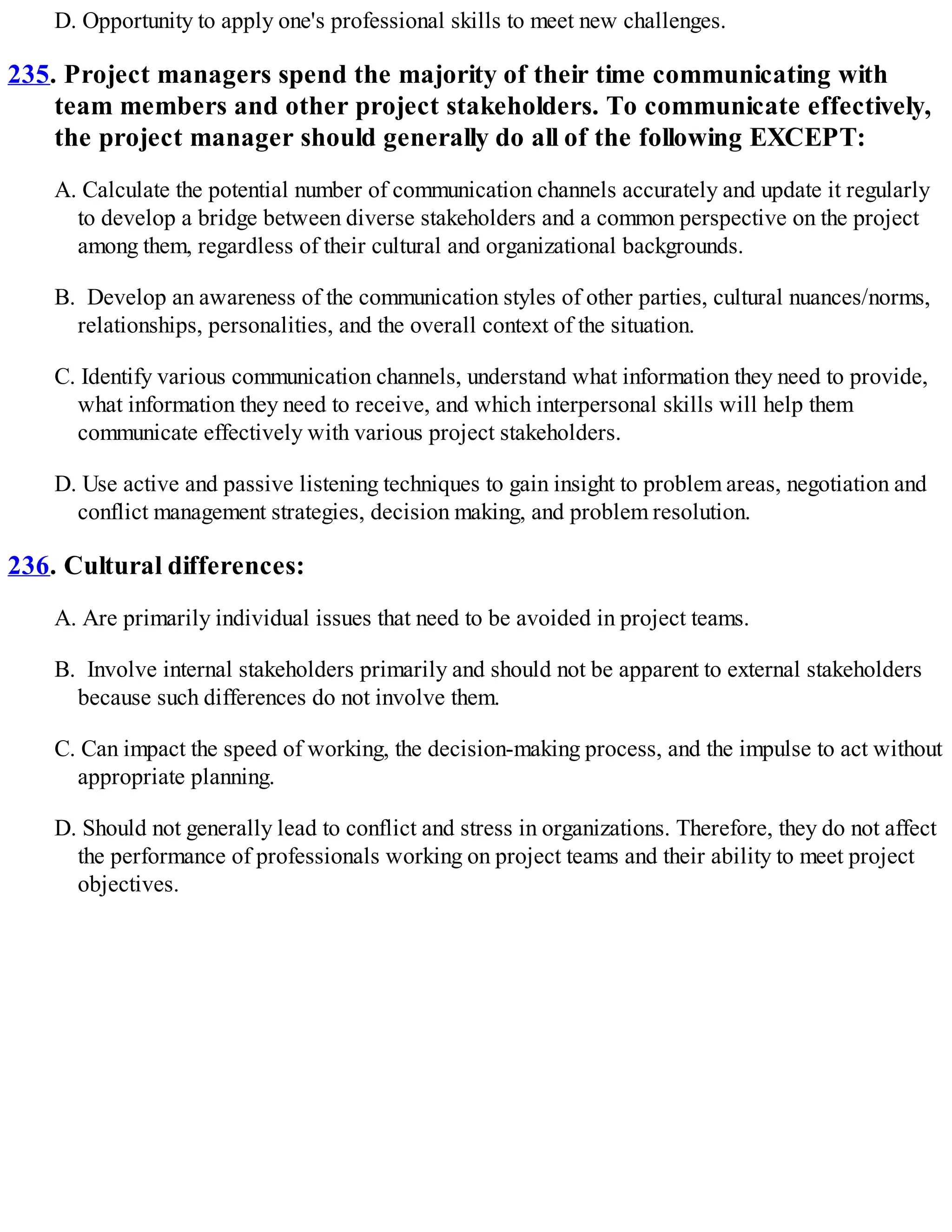

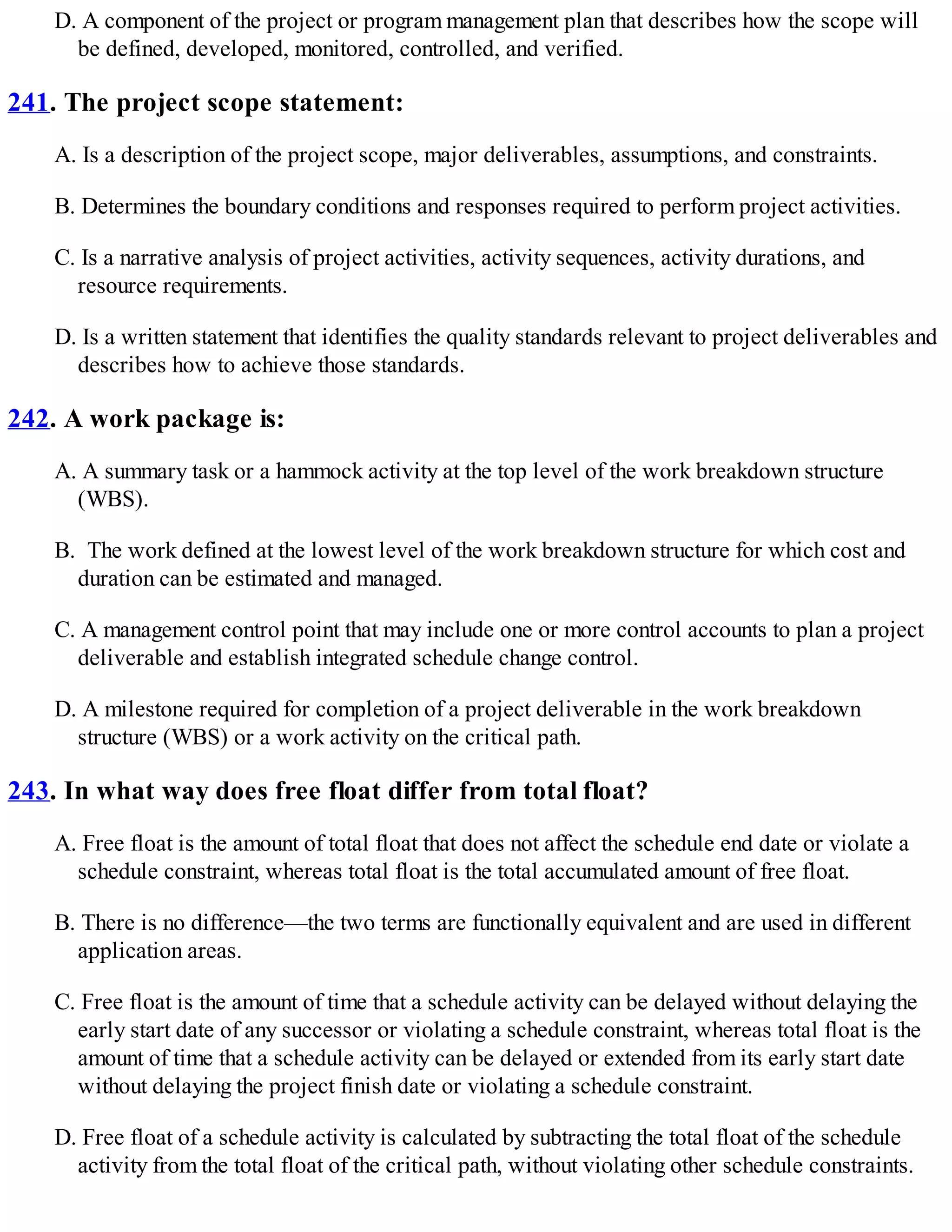







![many types of industries. The standard, included in Annex A1, describes the project management
processes used to manage a project toward a more successful outcome.
This standard is unique to the project management field and has interrelationships to other project
management disciplines such as program management and portfolio management.
Project management standards do not address all details of every topic. This standard is limited
to individual projects and the project management processes that are generally recognized as
good practice. Other standards may be consulted for additional information on the broader context
in which projects are accomplished, such as:
• The Standard for Program Management [3] addresses the management of programs,
• The Standard for Portfolio Management [4] addresses the management of portfolios,
• Organizational Project Management Maturity Model (OPM3®) [5] examines an enterprise's
project management process capabilities.](https://image.slidesharecdn.com/qas-160416195309/75/Q-amp-as-90-2048.jpg)


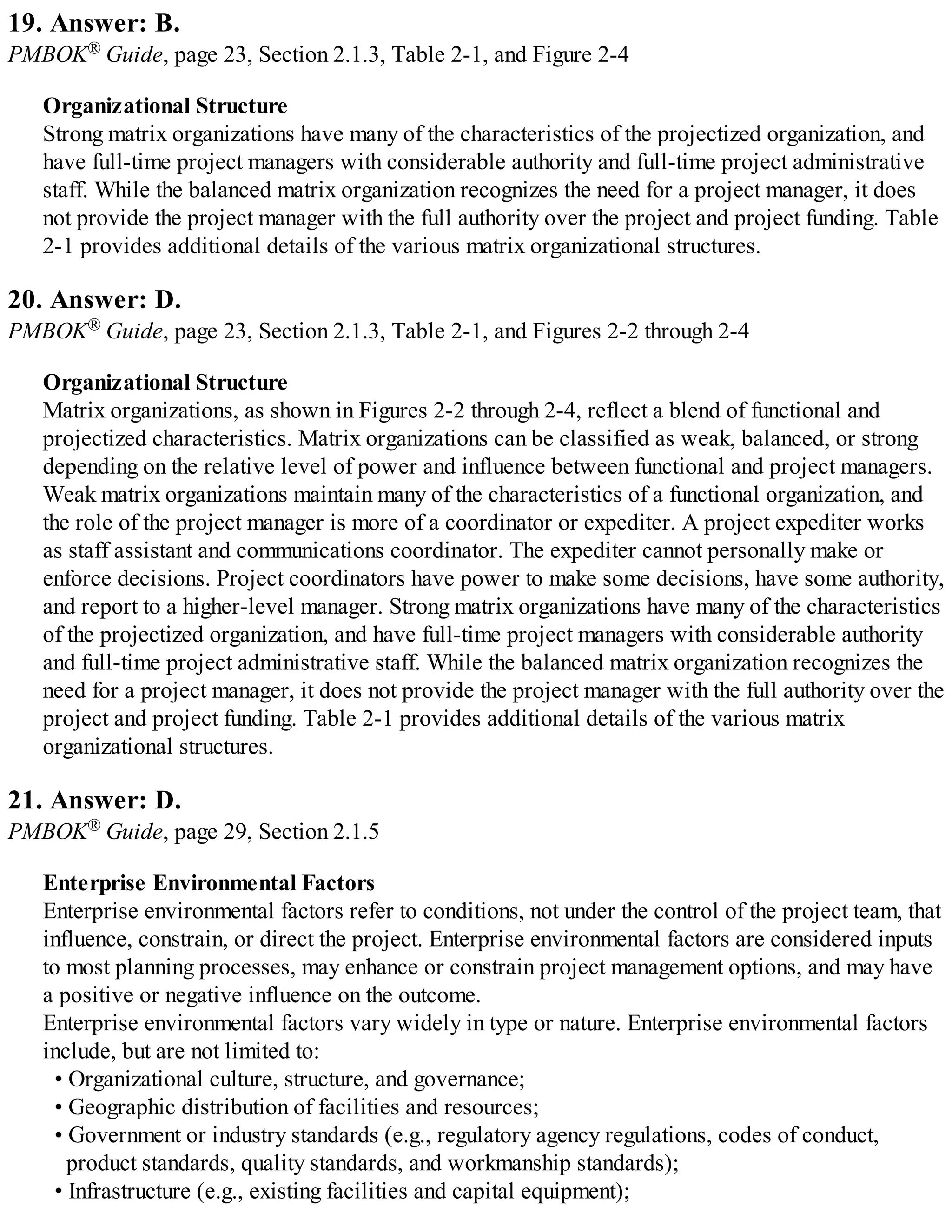





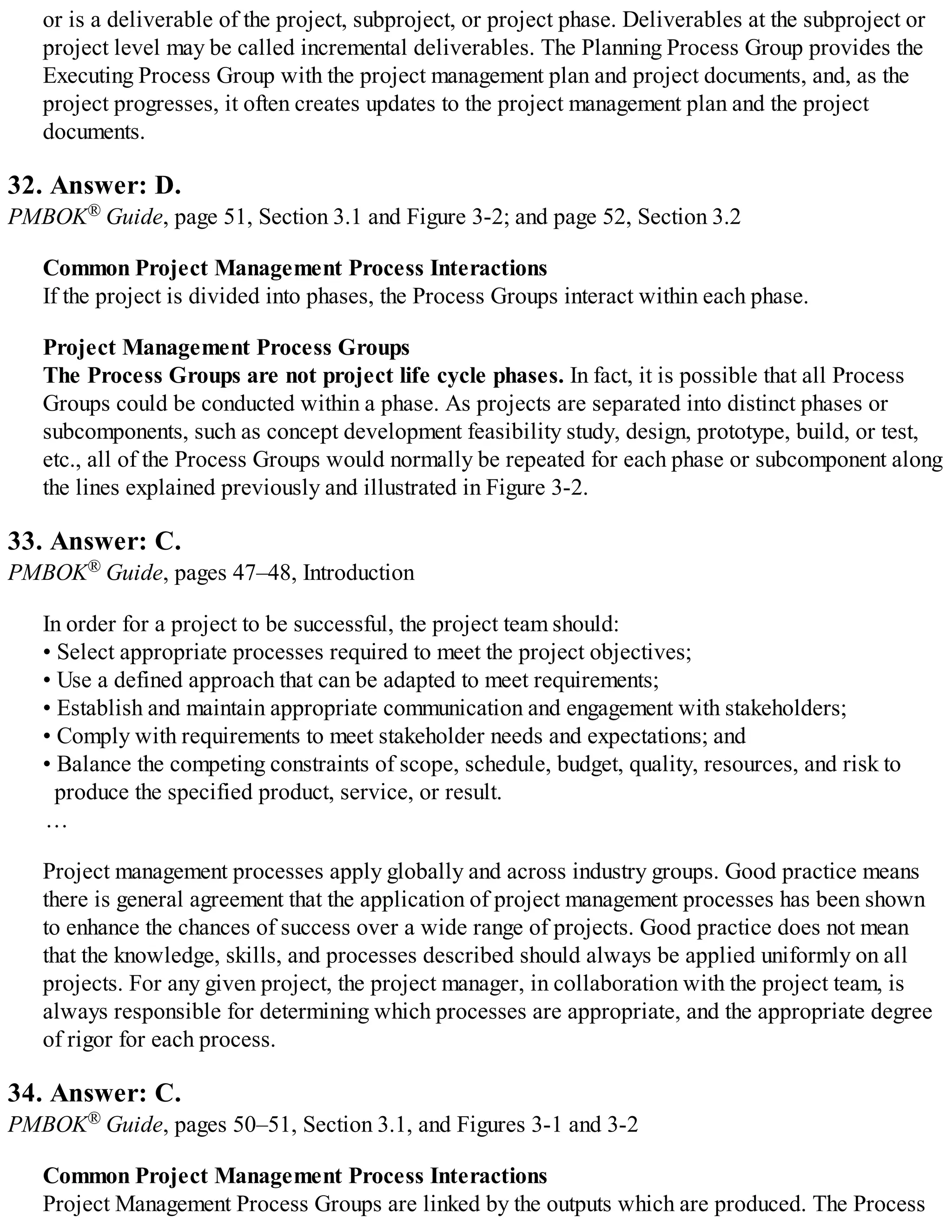

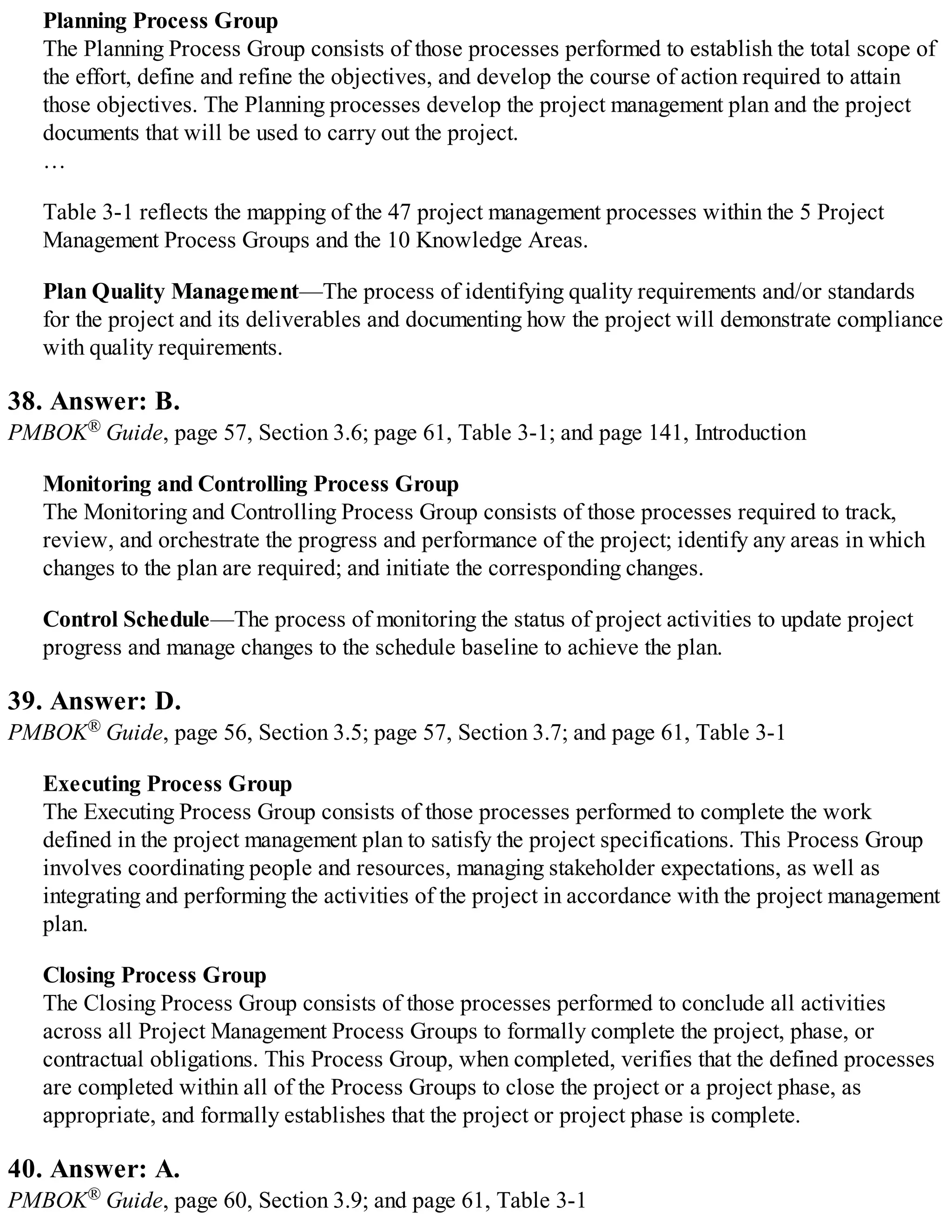



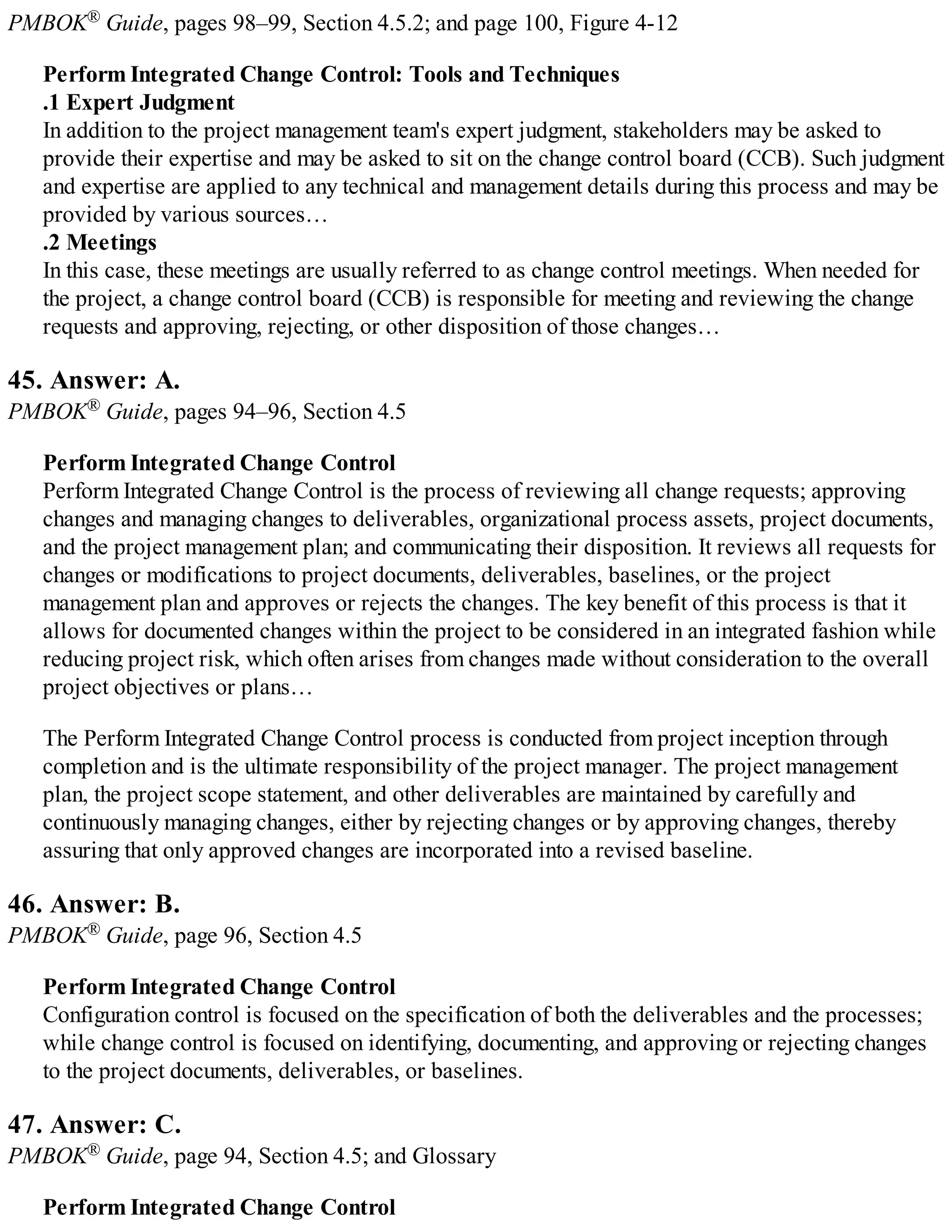





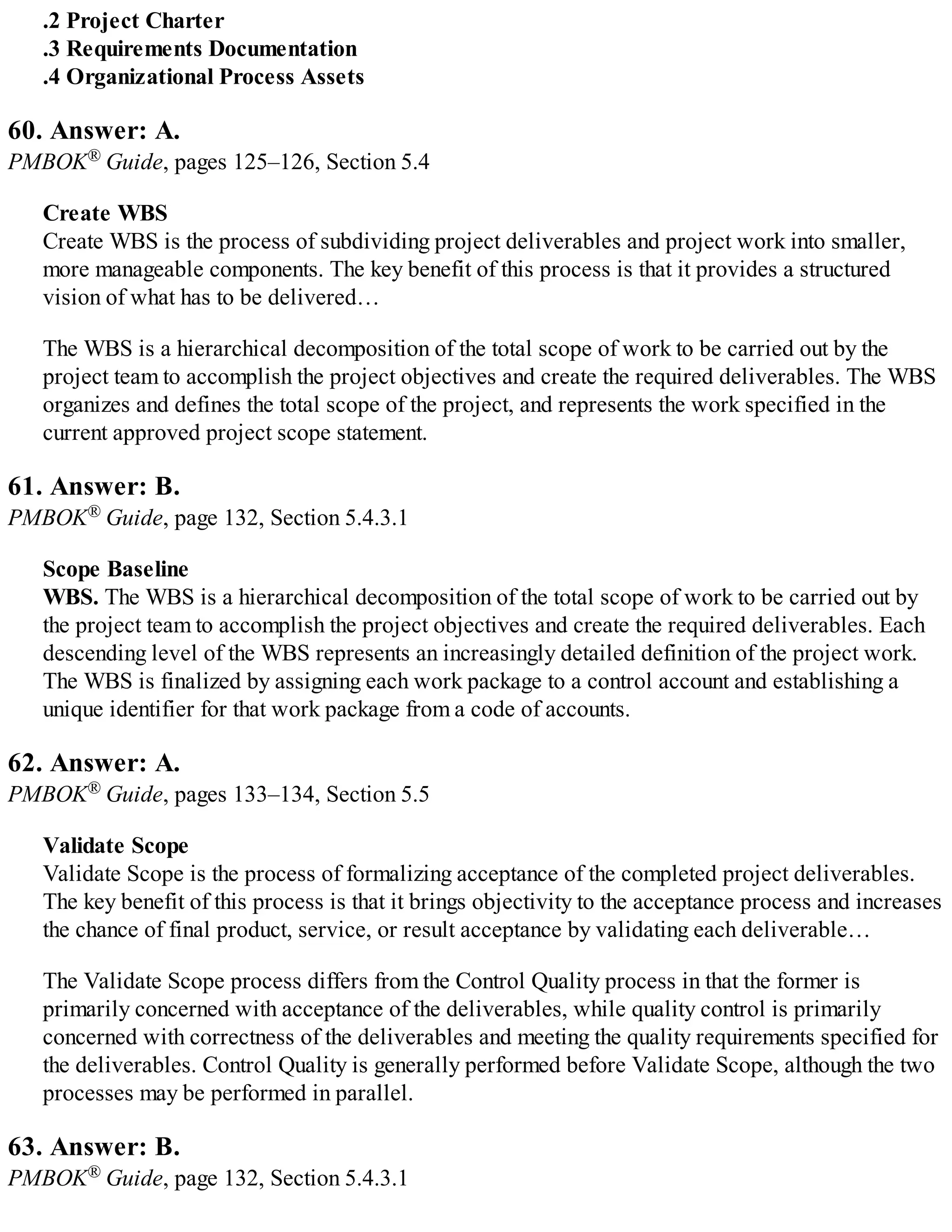
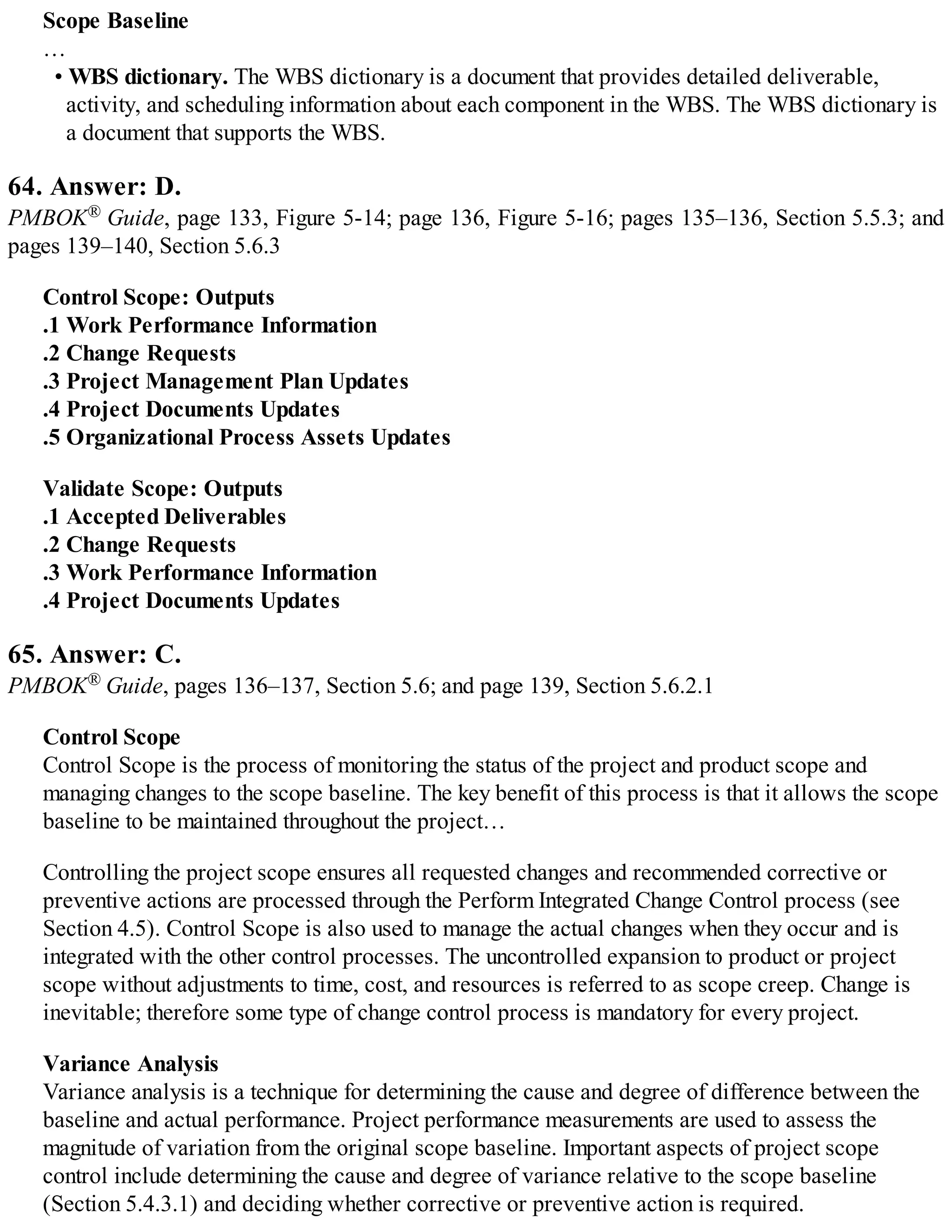







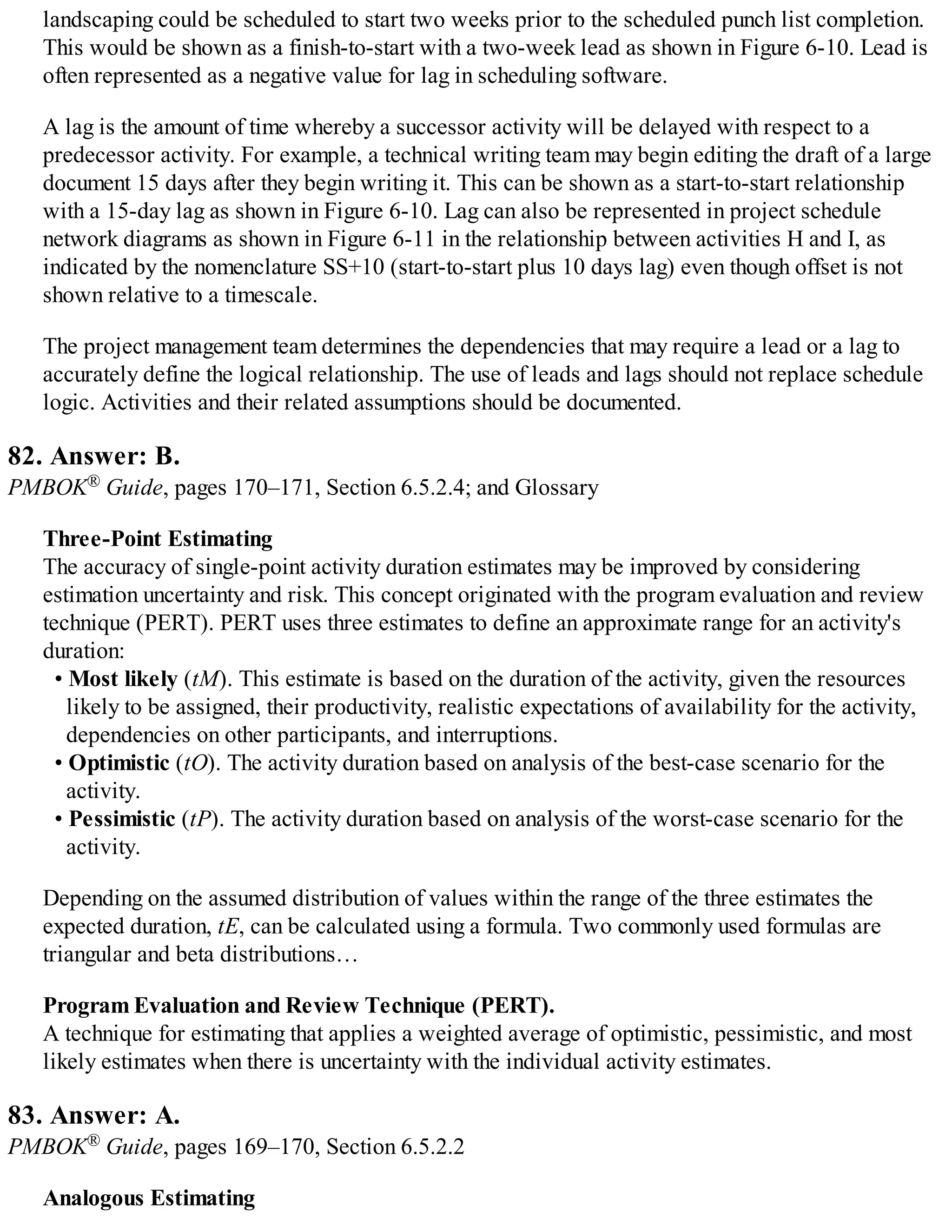





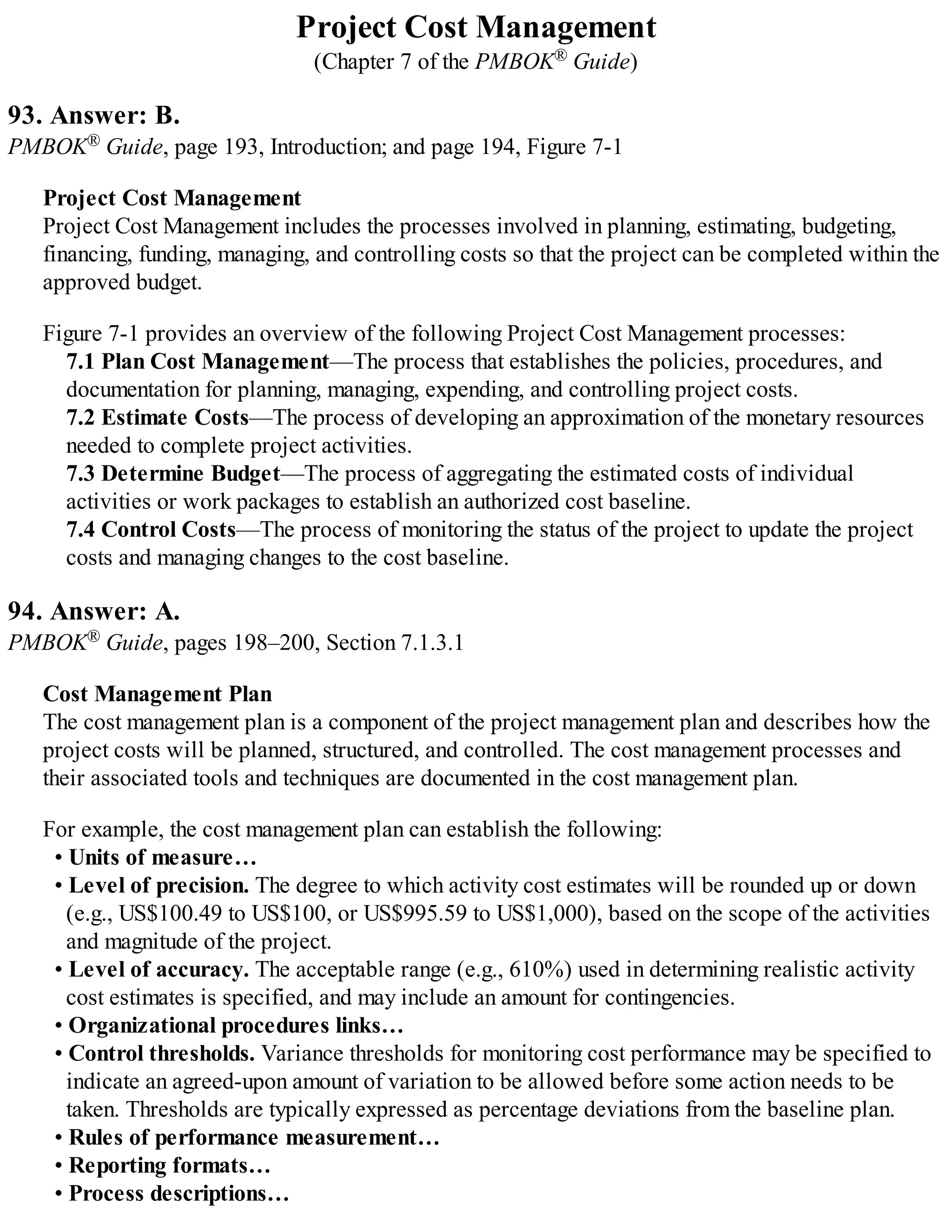




![AC + (BAC – EV)
104. Answer: A.
PMBOK® Guide, page 220, Section 7.4.2.2
Forecasting
…
The project manager's manual EAC is quickly compared with a range of calculated EACs
representing various risk scenarios. When calculating EAC values, the cumulative CPI and SPI
values are typically used. While EVM data quickly provide many statistical EACs, only three of
the more common methods are described as follows:
…
• EAC forecast for ETC work performed at the present CPI. This method assumes what the
project has experienced to date can be expected to continue in the future. The ETC work is
assumed to be performed at the same cumulative cost performance index (CPI) as that
incurred by the project to date. Equation: EAC = BAC/CPI
105. Answer: D.
PMBOK® Guide, page 221, Section 7.4.2.2
Forecasting
…
The project manager's manual EAC is quickly compared with a range of calculated EACs
representing various risk scenarios. When calculating EAC values, the cumulative CPI and SPI
values are typically used. While EVM data quickly provide many statistical EACs, only three of
the more common methods are described as follows:
…
• EAC forecast for ETC work considering both SPI and CPI factors. In this forecast, the
ETC work will be performed at an efficiency rate that considers both the cost and schedule
performance indices. This method is most useful when the project schedule is a factor
impacting the ETC effort. Variations of this method weight the CPI and SPI at different values
(e.g., 80/20, 50/50, or some other ratio) according to the project manager's judgment.
Equation: EAC = AC + [(BAC – EV)/(CPI × SPI)]
106. Answer: A.
PMBOK® Guide, page 220, Section 7.4.2.2; and page 224, Table 7-1
Forecasting
…
The project manager's manual EAC is quickly compared with a range of calculated EACs
representing various risk scenarios. When calculating EAC values, the cumulative CPI and SPI
values are typically used. While EVM data quickly provide many statistical EACs, only three of
the more common methods are described as follows:](https://image.slidesharecdn.com/qas-160416195309/75/Q-amp-as-131-2048.jpg)


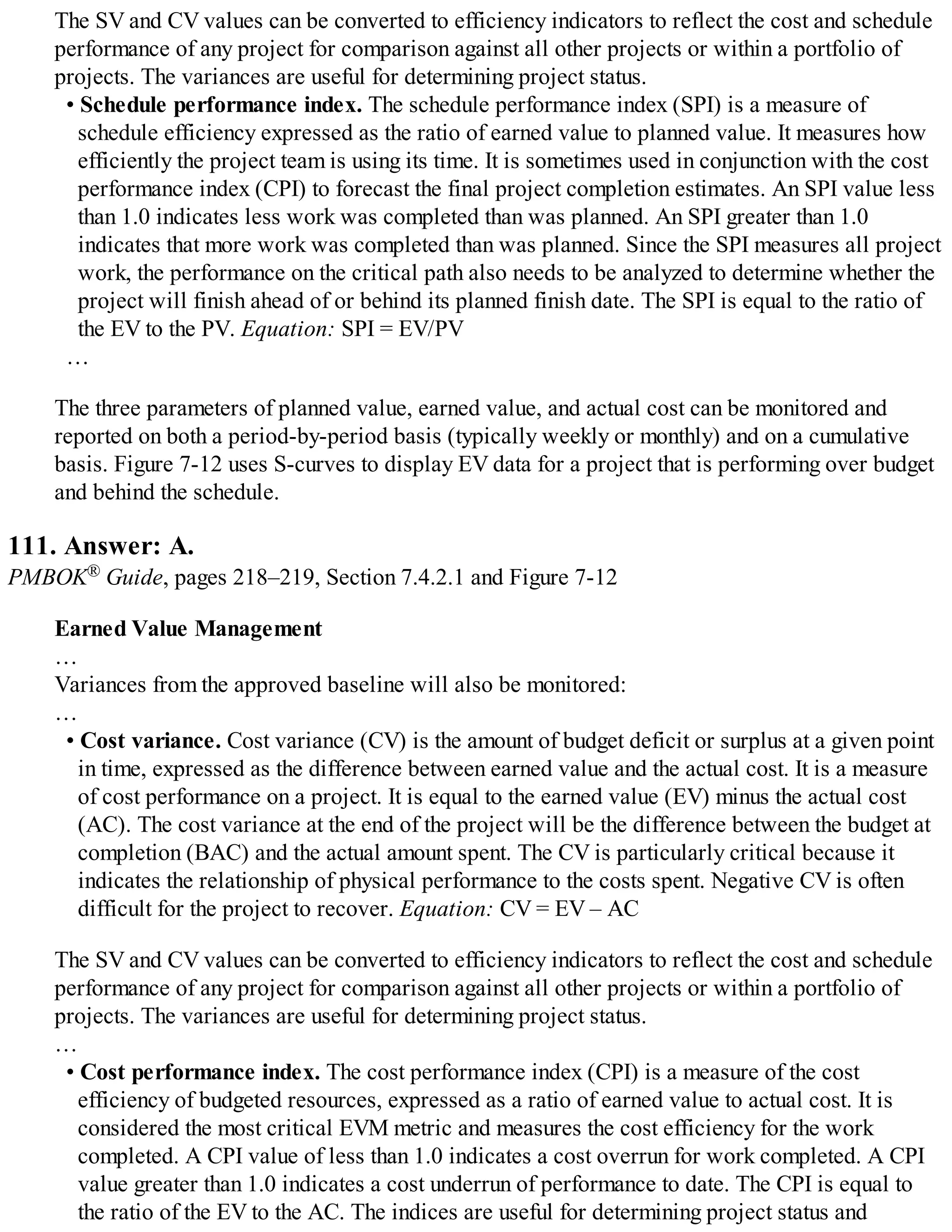





![Project Quality Management
(Chapter 8 of the PMBOK® Guide)
119. Answer: A.
PMBOK® Guide, page 227, Introduction
Project Quality Management
Project Quality Management includes the processes and activities of the performing organization
that determine quality policies, objectives, and responsibilities so that the project will satisfy
the needs for which it was undertaken. Project Quality Management uses policies and
procedures to implement, within the project's context, the organization's quality management
system and, as appropriate, it supports continuous process improvement activities as undertaken
on behalf of the performing organization. Project Quality Management works to ensure that the
project requirements, including product requirements, are met and validated.
120. Answer: A.
PMBOK® Guide, page 228, Introduction
Project Quality Management
Quality and grade are not the same concepts. Quality as a delivered performance or result is
“the degree to which a set of inherent characteristics fulfill requirements” (ISO 9000)[10].
Grade as a design intent is a category assigned to deliverables having the same functional use
but different technical characteristics. The project manager and the project management team are
responsible for managing the tradeoffs associated with delivering the required levels of both
quality and grade. While a quality level that fails to meet quality requirements is always a
problem, a low grade of quality may not be a problem. For example:
• It may not be a problem if a suitable low-grade software product (one with a limited number
of features) is of high quality (no obvious defects, readable manual). In this example, the
product would be appropriate for its general purpose of use.
• It may be a problem if a high-grade software product (one with numerous features) is of low
quality (many defects, poorly organized user documentation). In essence, its high-grade
feature set would prove ineffective and/or inefficient due to its low quality.
121. Answer: A.
PMBOK® Guide, page 229, Introduction
Project Quality Management
…
In the context of achieving ISO compatibility, modern quality management approaches seek to
minimize variation and to deliver results that meet defined requirements. These approaches
recognize the importance of:
• Customer satisfaction. Understanding, evaluating, defining, and managing requirements so
that customer expectations are met. This requires a combination of conformance to](https://image.slidesharecdn.com/qas-160416195309/75/Q-amp-as-140-2048.jpg)

